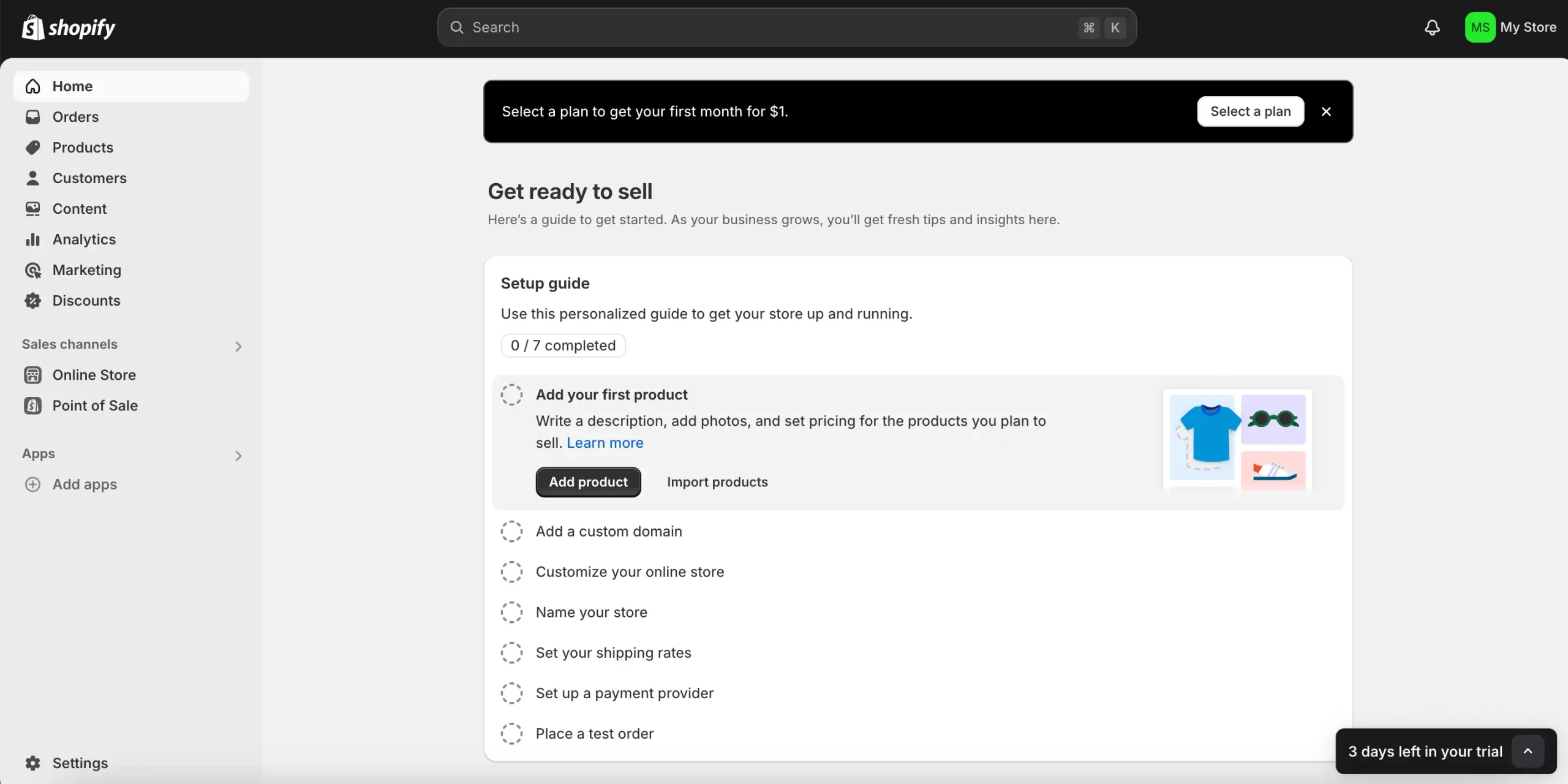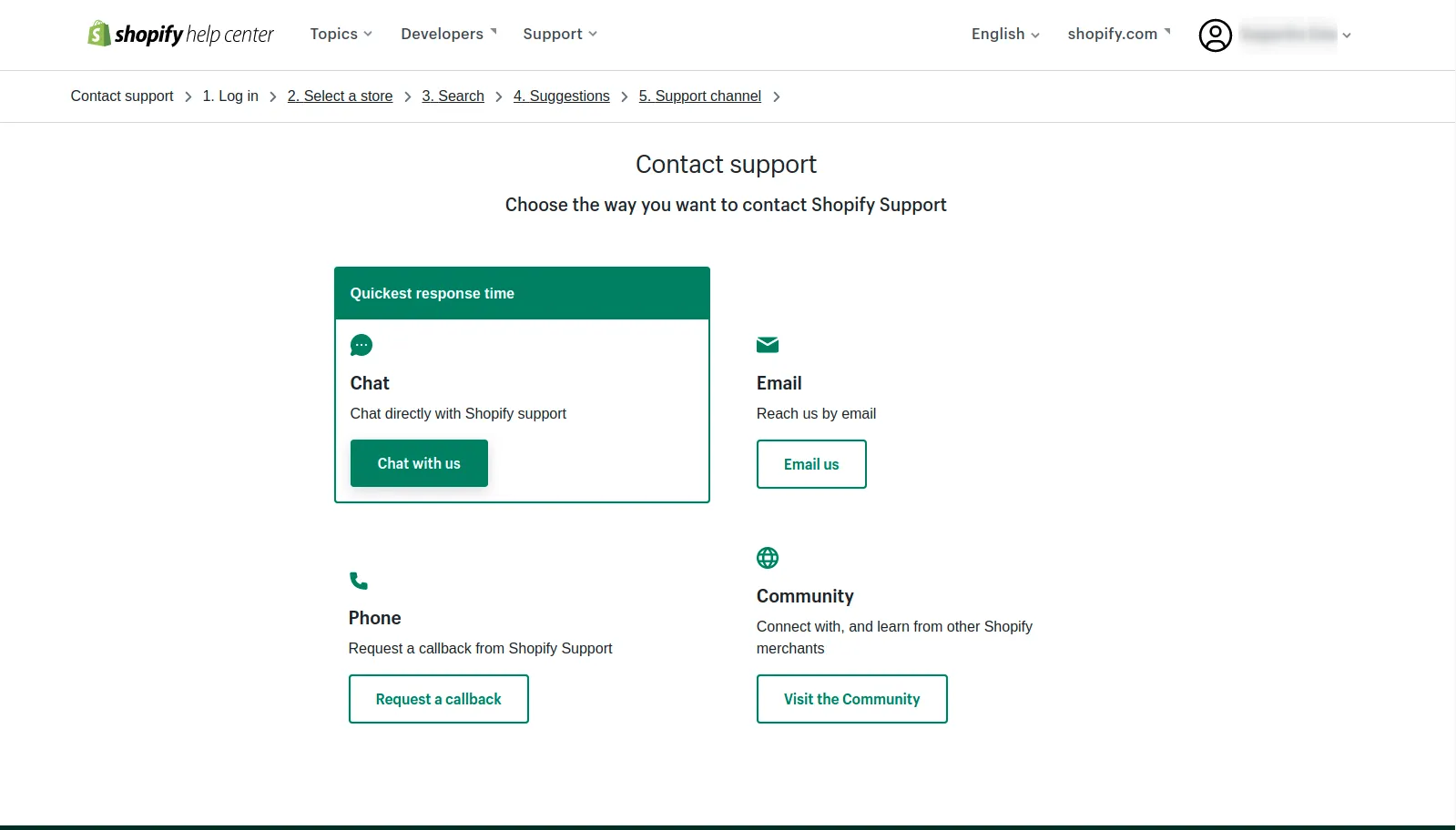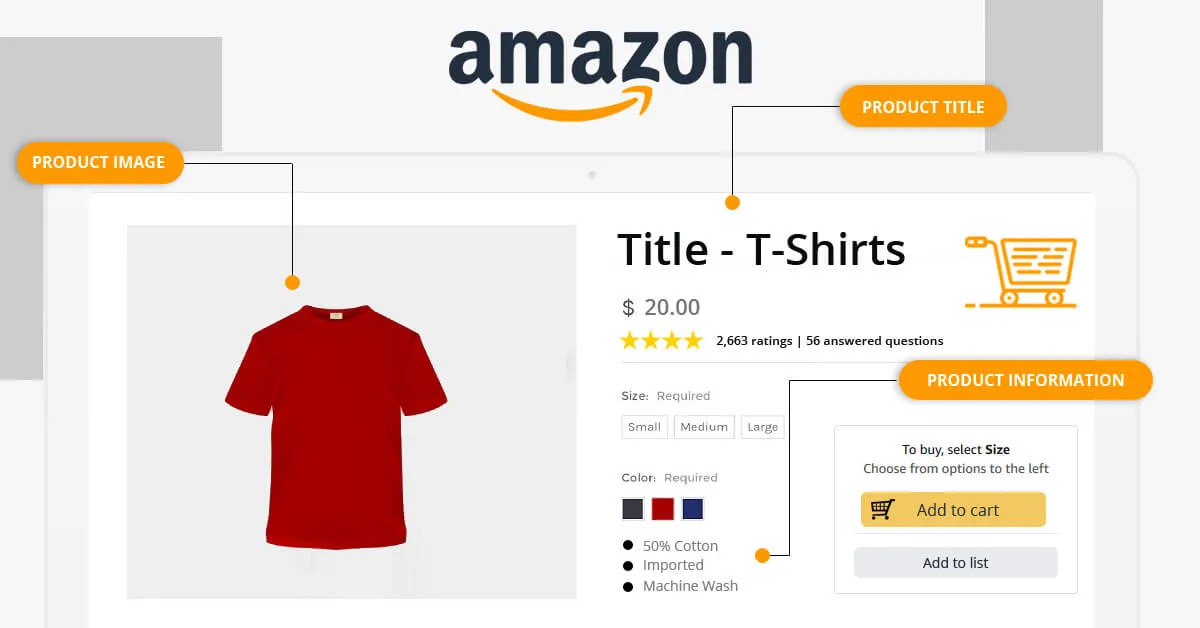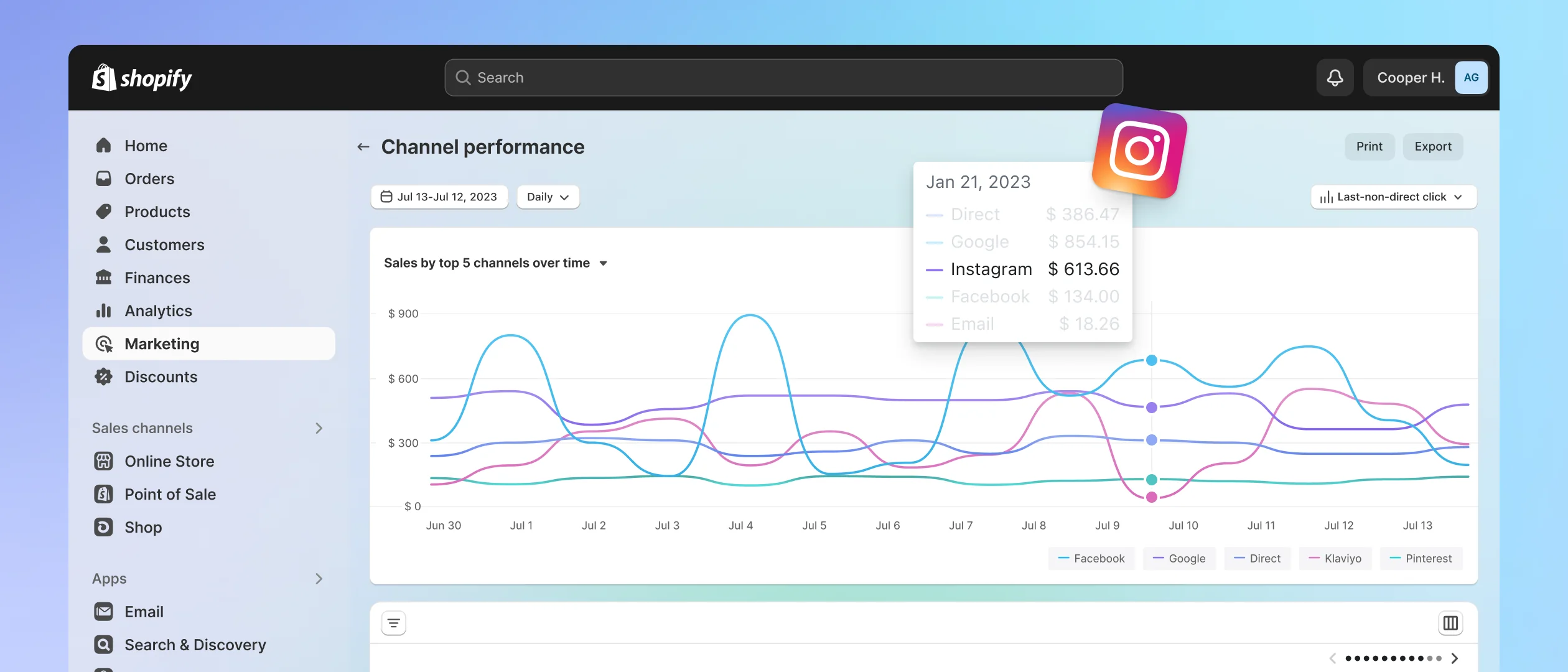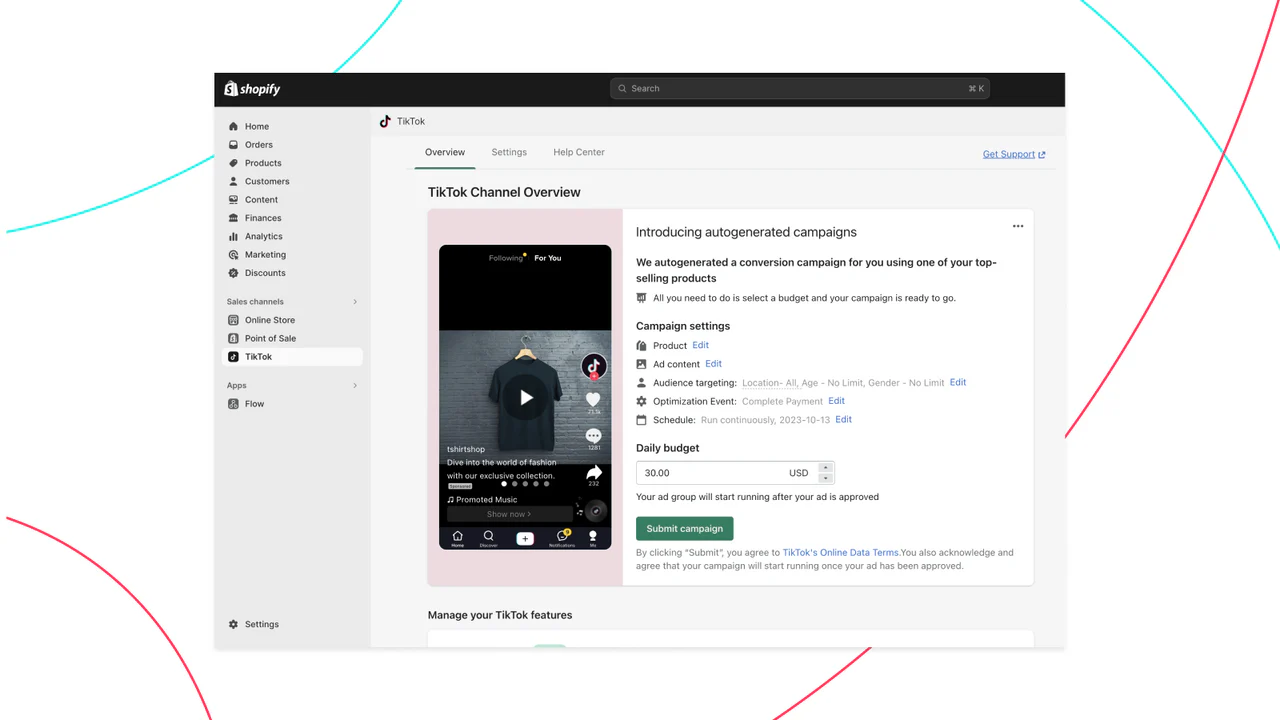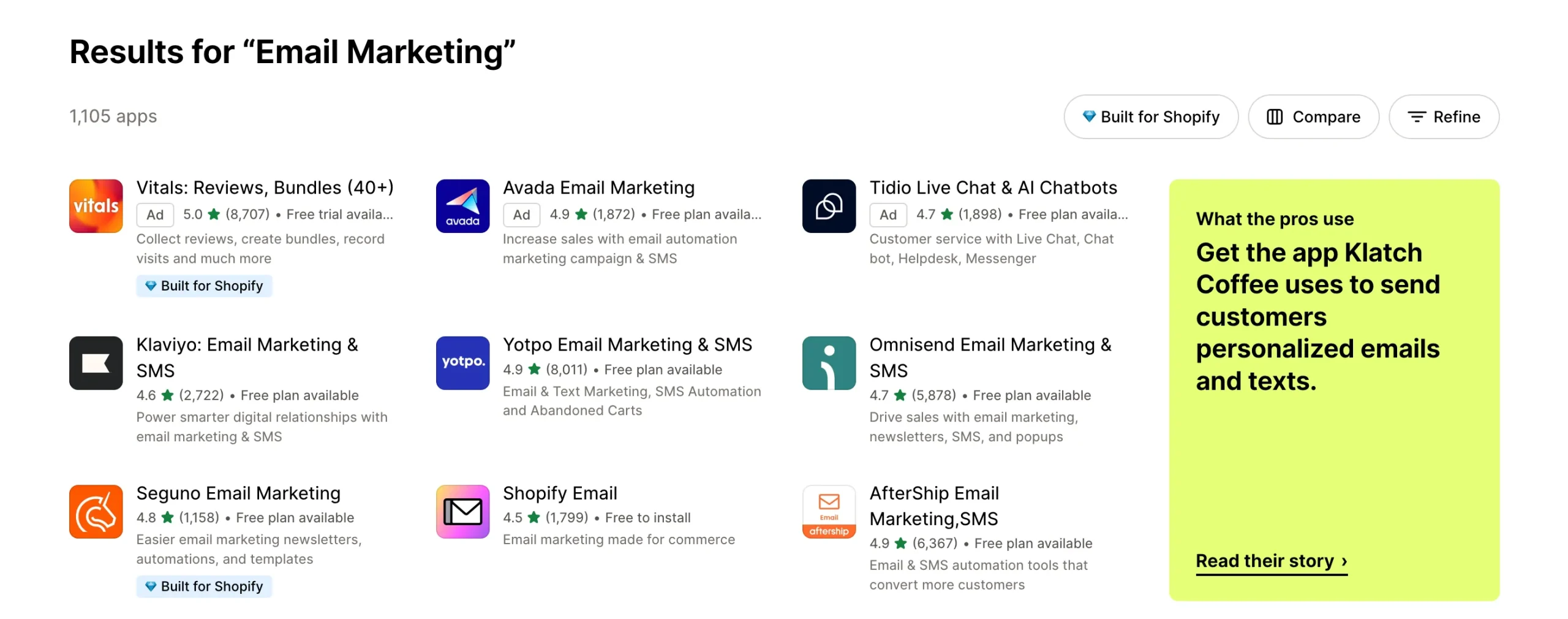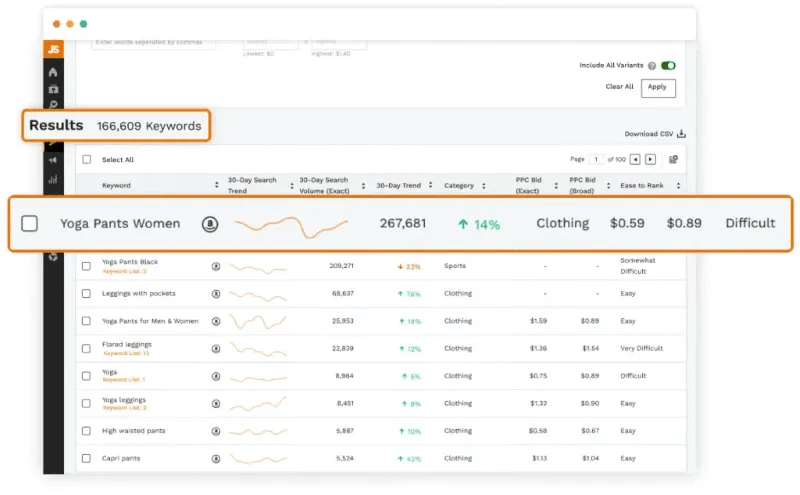In this comprehensive comparison of Shopify vs Amazon, we will explore the key features, strengths, and limitations of each platform. By delving into aspects such as pricing, ease of use, customization, and scalability, this blog post aims to provide a clear understanding of which platform might be the best fit for your business needs in today’s competitive online market.
Table of Contents
Shopify vs Amazon: Overview
As businesses of all sizes increasingly turn to online platforms to reach their customers, the choice between Shopify and Amazon has become a critical decision that can shape the future of their digital presence. Each platform offers unique strengths, catering to different types of sellers and business models, making the Shopify vs Amazon comparison a key consideration for anyone looking to succeed in the competitive world of eCommerce.
Shopify
Shopify is a subscription-based eCommerce platform that enables companies to create their brand and online storefront. With the help of simple-to-use and mobile-friendly themes, users may create websites. To increase the functionality of the site, additional tools relating to marketing, shop administration, analytics, and third-party connections are available.
What is Shopify
Shopify is a leading eCommerce platform that allows businesses to create and manage their own online stores. Founded in 2006 by Tobias Lütke, Daniel Weinand, and Scott Lake, Shopify has grown exponentially, becoming a favorite among entrepreneurs and established businesses alike. The platform provides users with a comprehensive suite of tools to design, manage, and optimize their online stores, enabling them to sell products directly to customers without needing extensive technical expertise.

One of the key features that sets Shopify apart is its user-friendly interface, which makes it accessible even to those with little or no experience in web development. Shopify’s platform is entirely cloud-based, meaning that users can manage their stores from anywhere in the world as long as they have internet access. This flexibility has made Shopify an attractive option for businesses of all sizes, from small startups to large enterprises.
Basic Background Information
Shopify started as a solution to a problem its founders encountered when trying to set up an online store for snowboarding equipment. Dissatisfied with the existing eCommerce options, they decided to create their own platform, which quickly gained traction due to its ease of use and powerful features. Over the years, Shopify has expanded its offerings, continually updating its platform to include advanced features like integrated payment processing, inventory management, and SEO optimization.
Today, Shopify is more than just an eCommerce platform; it’s a complete ecosystem that includes a wide range of apps, themes, and services designed to help businesses succeed online. Shopify’s app store offers thousands of third-party integrations, allowing users to customize their stores to meet specific business needs. Whether it’s adding new sales channels, improving customer service, or automating marketing campaigns, Shopify provides the tools necessary to grow and scale an online business.
Market Share and User Base
Shopify has established itself as a dominant player in the eCommerce space, with a significant market share that continues to grow. As of 2024, Shopify powers over 4.5 million online stores across more than 175 countries, making it one of the most widely used eCommerce platforms globally. The platform’s success can be attributed to its scalability, which allows businesses to start small and expand as they grow, all within the same ecosystem.
In terms of market share, Shopify holds a strong position among eCommerce platforms. While it doesn’t compete directly with the sheer volume of transactions seen on Amazon, Shopify’s market share in the United States alone accounts for approximately 10% of all eCommerce sales, a figure that has been steadily rising. Staples, Bombas, and Heinz are just a few of the large firms using Shopify to run their online storefronts. This growth is fueled by Shopify’s ability to attract a diverse range of users, from independent artisans and small businesses to large multinational corporations.
The user base of Shopify is as diverse as its features. Small and medium-sized businesses are particularly drawn to Shopify due to its affordability and the ease with which they can establish an online presence. However, Shopify is also popular among larger enterprises, thanks to its Shopify Plus offering, which provides advanced features and dedicated support tailored to high-volume businesses.
The growing popularity of Shopify is also reflected in its financial performance. The company has consistently reported strong revenue growth, driven by an increase in the number of merchants using the platform and the expansion of its range of services. Shopify’s subscription and merchant solutions revenue streams ensure that it remains a formidable player in the eCommerce market, even as competition intensifies.
In the context of the ongoing Shopify vs Amazon debate, Shopify’s market share and user base highlight its position as a viable alternative to Amazon for businesses looking to maintain control over their brand and customer relationships. While Amazon offers unparalleled reach and a ready-made customer base, Shopify empowers businesses to create unique, customized shopping experiences that differentiate them from the competition. This control over branding and customer engagement is a significant factor that continues to drive Shopify’s growth and popularity among eCommerce entrepreneurs and established brands alike.
Amazon
Amazon is a global online marketplace with over 197 million customers. Unlike Shopify, you will face off against other online retailers in the same market. Merchants may send items to Amazon fulfillment centers where they are kept, packaged, and dispatched through the Amazon FBA (Fulfillment by Amazon) program.
What is Amazon
Amazon is one of the largest and most influential companies in the world, and it has fundamentally transformed the way people shop online. Founded in 1994 by Jeff Bezos as an online bookstore, Amazon has since evolved into a massive eCommerce platform that sells virtually anything—from books and electronics to clothing and groceries. Today, Amazon is not just a retailer; it’s a sprawling ecosystem that includes services like Amazon Prime, Amazon Web Services (AWS), and a vast third-party marketplace that allows millions of sellers to reach customers around the globe.
Amazon’s core eCommerce platform is known for its convenience, extensive product selection, and fast shipping. Through its third-party marketplace, Amazon enables businesses of all sizes to sell their products directly to consumers, leveraging Amazon’s robust logistics and distribution network. This marketplace model has been a key driver of Amazon’s growth, as it allows the company to offer an unparalleled variety of products without holding all the inventory itself.
Basic Background Information
Amazon’s journey from a small online bookstore to a global eCommerce giant is nothing short of remarkable. After its founding in 1994, Amazon quickly expanded its product offerings beyond books, adding categories like music, electronics, and more. By the early 2000s, Amazon had already established itself as a dominant force in online retail, but the company’s ambitions didn’t stop there.
In 2005, Amazon launched Amazon Prime, a subscription service that offers members free two-day shipping on millions of products, as well as access to streaming video, music, and other benefits. This move significantly boosted customer loyalty and drove an increase in sales, as Prime members tend to spend more on the platform than non-members. Amazon also expanded into cloud computing with the introduction of Amazon Web Services (AWS) in 2006, which has since become one of the most profitable parts of the company.
Amazon’s continuous innovation and expansion have allowed it to maintain its position as a leader in the eCommerce industry. The company has made significant investments in technology, logistics, and customer service to ensure that it remains at the forefront of the market. From the introduction of one-click ordering to the development of artificial intelligence-driven product recommendations, Amazon has consistently pushed the boundaries of what’s possible in online retail.
Today, Amazon operates in numerous countries around the world and offers localized versions of its marketplace in multiple languages. The company has also expanded its physical presence with Amazon-branded stores, such as Amazon Go and Amazon Books, further blurring the lines between online and offline retail.
Market Share and User Base
When it comes to market share, Amazon is the undisputed leader in the global eCommerce market. As of 2024, Amazon accounts for nearly 40% of all eCommerce sales in the United States, making it the largest online retailer in the country by a significant margin. This dominance extends to many other markets around the world, where Amazon continues to capture a large share of online sales.
Amazon’s user base is massive and diverse, comprising millions of customers and third-party sellers. The company’s marketplace hosts over 9.7 million sellers worldwide, with more than 2.5 million actively selling products at any given time. These sellers range from small businesses and individual entrepreneurs to large multinational corporations, all of whom leverage Amazon’s platform to reach a global audience.
In addition to its extensive seller base, Amazon boasts over 200 million Prime members globally, a testament to the platform’s ability to attract and retain loyal customers. Prime members are a critical part of Amazon’s business model, as they tend to shop more frequently and spend more on the platform than non-members. This loyalty has been a key factor in Amazon’s continued growth and dominance in the eCommerce space.
Amazon’s reach and influence are further amplified by its vast logistics network, which includes hundreds of fulfillment centers, distribution centers, and delivery stations around the world. This infrastructure enables Amazon to offer fast and reliable shipping, often delivering products to customers within a day or even hours of placing an order. This level of convenience has made Amazon the go-to platform for millions of shoppers looking for a wide variety of products at competitive prices.
In the ongoing Shopify vs Amazon debate, Amazon’s market share and user base highlight its unparalleled reach and influence in the eCommerce industry. While Shopify offers businesses the tools to create and manage their own branded online stores, Amazon provides access to an enormous customer base and the logistical support needed to scale quickly. However, this comes at the cost of less control over branding and customer relationships, as Amazon’s platform is designed to prioritize convenience and efficiency over individual seller branding.
Shopify vs Amazon: Detailed Comparison
The battle between Shopify and Amazon boiled down to what you want out of your store – for both have their strengths and weaknesses. Both Shopify and Amazon provide robust tools for online selling, but the approach each platform takes to meeting the needs of businesses is distinct. Shopify focuses on giving merchants full control over their eCommerce store, offering extensive customization and integration options, while Amazon excels in providing access to an enormous marketplace with unparalleled reach. Let’s delve into the intricacies and details of each platform to find out which one is superior.
Platform Features
When comparing Shopify vs Amazon, the core features of each platform play a crucial role in determining which is the best fit for your business. Understanding the strengths and limitations of each platform’s features is essential to making an informed decision for your eCommerce strategy.
Shopify
- eCommerce Storefront Customization: One of the biggest draws of Shopify is the ability to design a unique, fully customized online store. Shopify provides an intuitive drag-and-drop builder, allowing users with little to no coding experience to create visually appealing storefronts. With access to over 70 customizable themes, businesses can craft a site that reflects their brand identity. Shopify’s platform is flexible, offering advanced users the ability to edit the HTML and CSS directly, ensuring complete control over the design and functionality of the website. This level of customization is a key reason why businesses often choose Shopify in the Shopify vs Amazon comparison when they prioritize branding.
- App Integrations: Shopify’s App Store is home to thousands of third-party apps that seamlessly integrate with your online store. From marketing tools like Klaviyo and Mailchimp to sales-enhancing apps like Shopify POS and Oberlo, Shopify covers almost every aspect of business management. Apps can help automate tasks such as customer service, order fulfillment, and accounting, allowing business owners to streamline operations. Whether you need advanced analytics, loyalty programs, or customer review systems, Shopify’s app ecosystem offers a solution. These integrations make Shopify a strong contender in the Shopify vs Amazon debate, as they enable merchants to tailor their stores to meet specific business needs.
- Payment Processing: Shopify Payments is Shopify’s integrated payment processing system, which eliminates the need for third-party processors and simplifies transactions for both merchants and customers. In addition to Shopify Payments, the platform supports over 100 third-party payment gateways, allowing businesses to accept payments from almost anywhere in the world. Shopify’s flexibility in payment options sets it apart in the Shopify vs Amazon comparison, especially for businesses looking to offer multiple payment methods to their customers.
- Inventory Management: Shopify offers robust inventory management tools that allow merchants to track stock levels, manage product variants, and set up automated notifications for low stock. The platform supports multi-location inventory management, making it ideal for businesses with multiple warehouses or physical stores. Shopify’s inventory management system integrates with popular third-party apps, enabling seamless order fulfillment. This feature is particularly useful for businesses that need precise control over their inventory, setting Shopify apart in the Shopify vs Amazon discussion.
- SEO and Marketing Tools: Shopify provides built-in SEO features that make it easier for businesses to optimize their stores for search engines. From customizable title tags and meta descriptions to automatically generated sitemaps, Shopify’s SEO tools help businesses improve their visibility online. In addition to SEO, Shopify integrates with email marketing platforms and social media channels like Facebook and Instagram, allowing merchants to run targeted campaigns. The platform also offers built-in discount codes, gift cards, and referral programs, making it a robust marketing tool in the Shopify vs Amazon comparison.
- Mobile Responsiveness: Shopify is designed to be mobile-friendly, ensuring that your online store looks great on any device. All themes in Shopify’s theme store are optimized for mobile, and the platform also provides a mobile app that allows merchants to manage their store on the go. With more consumers shopping via mobile devices, Shopify’s mobile responsiveness gives it an edge in the Shopify vs Amazon debate for businesses that prioritize a seamless mobile shopping experience.
- Customer Support: Shopify’s customer support is one of its strongest features, offering 24/7 assistance through live chat, phone, and email. Additionally, Shopify provides an extensive help center, filled with guides, tutorials, and a community forum where merchants can ask questions and share advice. For businesses that require ongoing support, Shopify’s comprehensive customer service options make it a top choice in the Shopify vs Amazon comparison.
Amazon
- Marketplace Model: Amazon operates as a vast marketplace where sellers can list their products alongside millions of other merchants. The marketplace model allows sellers to tap into Amazon’s massive customer base, offering immediate access to a global audience. A major advantage of this model is Amazon’s Fulfillment by Amazon (FBA) program, which handles storage, shipping, and customer service on behalf of sellers. In the Shopify vs Amazon debate, Amazon’s marketplace model is ideal for businesses that prioritize speed to market and access to a large customer base without the need to build and manage their own storefront.
- Product Listings and Visibility: Amazon’s product listing process is straightforward, allowing sellers to add products quickly and easily. However, standing out on Amazon’s platform requires a strategic approach to product listings. Sellers must optimize their listings with relevant keywords to rank higher in search results, as Amazon’s A9 algorithm determines product visibility based on relevance, reviews, and sales performance. While Amazon’s marketplace offers high visibility due to its size, the challenge lies in differentiating products amidst intense competition, an aspect to consider in the Shopify vs Amazon comparison.
- Customer Reach and Traffic: Amazon’s most significant advantage in the Shopify vs Amazon debate is its enormous customer base. With over 300 million active users, Amazon brings unparalleled traffic to its marketplace, giving sellers a huge potential audience. Amazon’s dominance in search engines means that millions of customers use the platform as their first stop when searching for products, offering built-in traffic that Shopify sellers would need to generate through SEO, advertising, and marketing efforts.
- Fulfillment and Shipping: Amazon’s logistics network is one of the most advanced in the world. Through Fulfillment by Amazon (FBA), sellers can leverage Amazon’s warehousing and shipping services, ensuring fast delivery to customers. FBA products are eligible for Amazon Prime, which guarantees two-day shipping, further boosting sales. Sellers also have the option to manage fulfillment themselves, but Amazon’s shipping infrastructure makes it the preferred choice for many businesses. This logistical advantage is a significant factor in the Shopify vs Amazon debate, especially for sellers seeking to streamline order fulfillment and delivery.
- Advertising and Promotions: Amazon offers a range of advertising options, including Sponsored Products, Sponsored Brands, and Sponsored Display ads. These pay-per-click (PPC) ads allow sellers to promote their products and increase visibility within Amazon’s marketplace. In addition, Amazon offers promotional deals, such as Lightning Deals and Coupons, which can boost sales during high-traffic periods. For sellers who rely heavily on advertising to drive sales, Amazon’s robust advertising ecosystem is a critical consideration in the Shopify vs Amazon comparison.
- Customer Reviews and Feedback: Customer reviews play a vital role in Amazon’s marketplace, as they directly impact a product’s ranking and visibility. Positive reviews are crucial for building trust and driving sales, and sellers must actively manage customer feedback to maintain a high rating. Amazon’s review policies are strict, and sellers are required to follow specific guidelines when responding to customer reviews. This focus on reviews can be both a blessing and a challenge, depending on a seller’s ability to manage feedback effectively.
- Seller Support: Amazon provides seller support through its Seller Central platform, offering resources like performance reports, inventory tracking, and help forums. While Seller Central offers valuable tools for managing a business on Amazon, many sellers find Amazon’s customer service to be less responsive compared to Shopify’s. Additionally, Amazon has strict policies regarding seller performance, and failure to meet these standards can result in account suspension. In the Shopify vs Amazon debate, the level of seller support is a critical factor for merchants looking for ongoing assistance and flexibility in managing their business.
Ease of Use
Shopify is known for its user-friendly interface and seamless store setup, while Amazon provides an existing marketplace but comes with its own complexities. In this section, we will explore how easy it is to get started, manage, and scale your business on each platform, helping you decide which is best suited for your needs.
Shopify
Shopify is known for its ease of use, featuring an intuitive drag-and-drop interface that allows even beginners to set up and manage an online store without technical expertise. Its user-friendly dashboard and extensive support resources make running an eCommerce business straightforward and accessible.
Setup Process
Shopify’s setup process is designed to be as simple as possible, allowing even those with limited technical skills to create an online store. The process begins with signing up for an account on Shopify’s website. Once registered, users can select a theme for their store from Shopify’s extensive library, many of which are free, though premium options are available. Shopify provides a drag-and-drop interface that makes it easy to customize the store’s layout, design, and functionality without needing to know how to code.
After selecting and customizing the theme, users are guided through steps to add products, set prices, and configure shipping options. Shopify’s product editor allows for detailed product descriptions, images, and inventory management. The platform also integrates with a variety of payment gateways, including Shopify Payments, making it easy to start accepting payments immediately. The entire setup process, from sign-up to launch, can be completed in just a few hours, making Shopify an attractive option for those who want to start selling quickly in the Shopify vs Amazon comparison.
Dashboard and Interface
Shopify’s dashboard is intuitively designed, providing easy access to all the tools needed to run an online store. The clean layout allows users to navigate between product management, orders, customer data, and marketing tools with minimal effort. The left-hand sidebar contains all the essential sections, such as Products, Orders, Customers, Analytics, and Marketing, offering a streamlined experience that minimizes the learning curve.
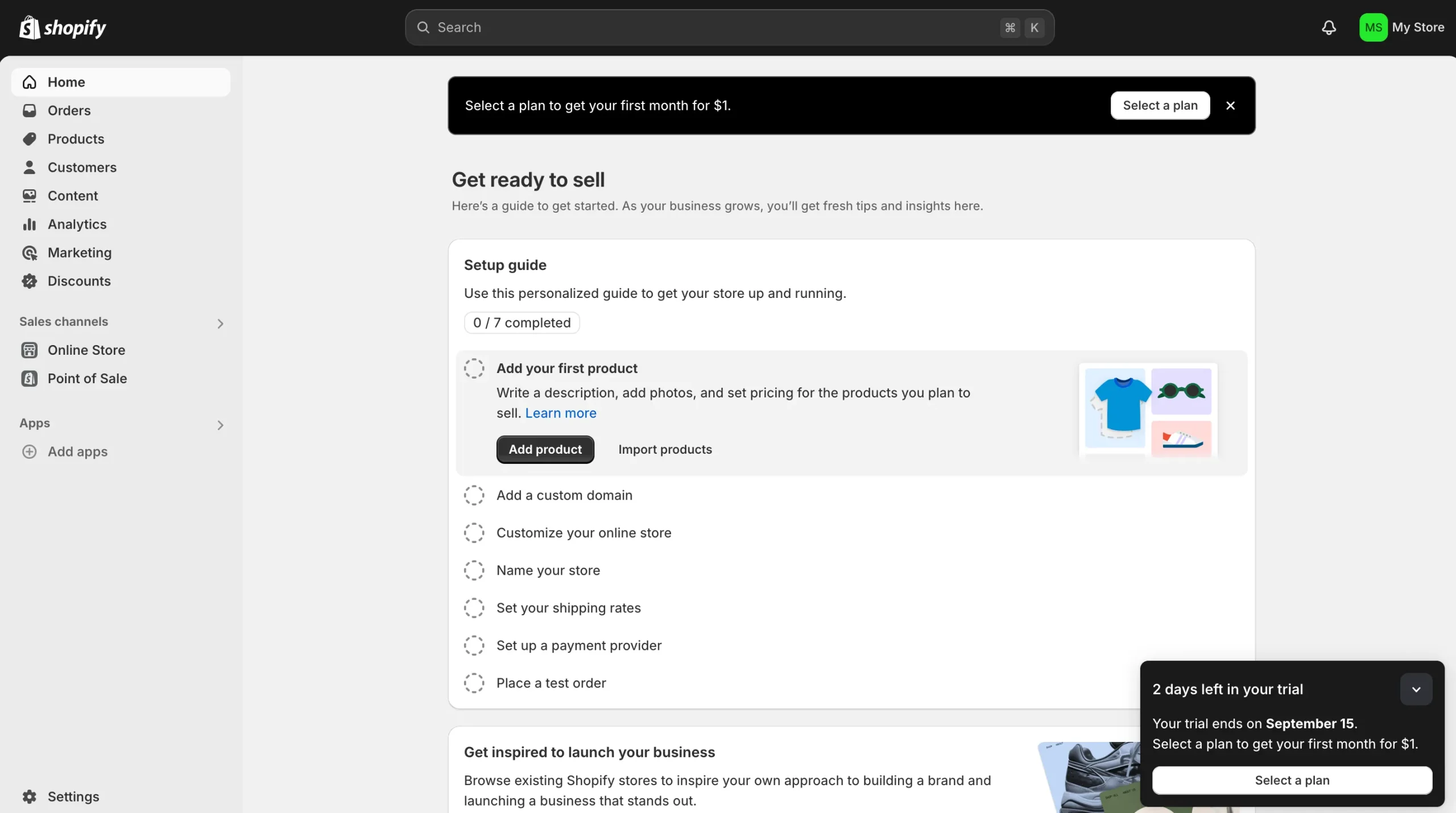
Each tool and feature within the dashboard is well-organized, and Shopify offers built-in analytics that allows merchants to track sales, monitor website traffic, and view customer behavior directly from the platform. Additionally, Shopify’s interface is mobile-friendly, meaning that store owners can manage their business on the go using the Shopify mobile app. This accessibility further strengthens Shopify’s position in the Shopify vs Amazon debate when it comes to ease of use.
Learning Curve
Shopify’s learning curve is relatively low, making it an ideal platform for beginners in the world of eCommerce. Shopify provides extensive resources, including step-by-step guides, video tutorials, and community forums, where users can get support and learn how to maximize the platform’s features. The intuitive interface ensures that even those without technical experience can manage a Shopify store with ease.
For users who need additional assistance, Shopify’s 24/7 customer support is available through live chat, phone, and email. The availability of third-party consultants and agencies also means that more complex needs can be outsourced if necessary. Overall, Shopify’s ease of use and low learning curve make it a top choice in the Shopify vs Amazon comparison, especially for new entrepreneurs or those who want a hassle-free store setup and management experience.
Amazon
Amazon offers a straightforward onboarding process for sellers, but its Seller Central interface can be complex, especially for those new to the platform. While the platform provides powerful tools for managing listings and performance, navigating the system and maintaining compliance with Amazon’s policies can require more effort compared to Shopify.
Onboarding Process
Amazon’s onboarding process is somewhat more involved compared to Shopify. To become a seller on Amazon, users need to create an account on Amazon Seller Central. There are two types of accounts: individual and professional. While the individual account is free, it is limited in features and is better suited for casual sellers. The professional account requires a monthly subscription fee but provides access to more tools and the ability to list unlimited products.
Once the account is set up, sellers can begin listing products. Amazon’s product listing process involves filling out detailed product descriptions, setting prices, and adding high-quality images. Amazon has strict guidelines for product listings to ensure consistency and quality, and failure to adhere to these rules can result in penalties. The onboarding process also includes setting up payment and tax information, making it somewhat more complex compared to Shopify’s streamlined approach.
For those who want to leverage Amazon’s Fulfillment by Amazon (FBA) service, additional steps are required to ship products to Amazon’s fulfillment centers. While Amazon’s onboarding process may take longer than Shopify’s, the reward is access to Amazon’s vast customer base, which is a key advantage in the Shopify vs Amazon debate.
Seller Central Interface
Amazon Seller Central is the central hub where sellers manage their products, orders, and customer interactions. While Seller Central provides access to a wealth of tools, including performance metrics, advertising options, and inventory tracking, the interface can feel overwhelming for new sellers. The dashboard is densely packed with information, and navigating through the various sections can take some time to get used to, especially for those unfamiliar with eCommerce platforms.
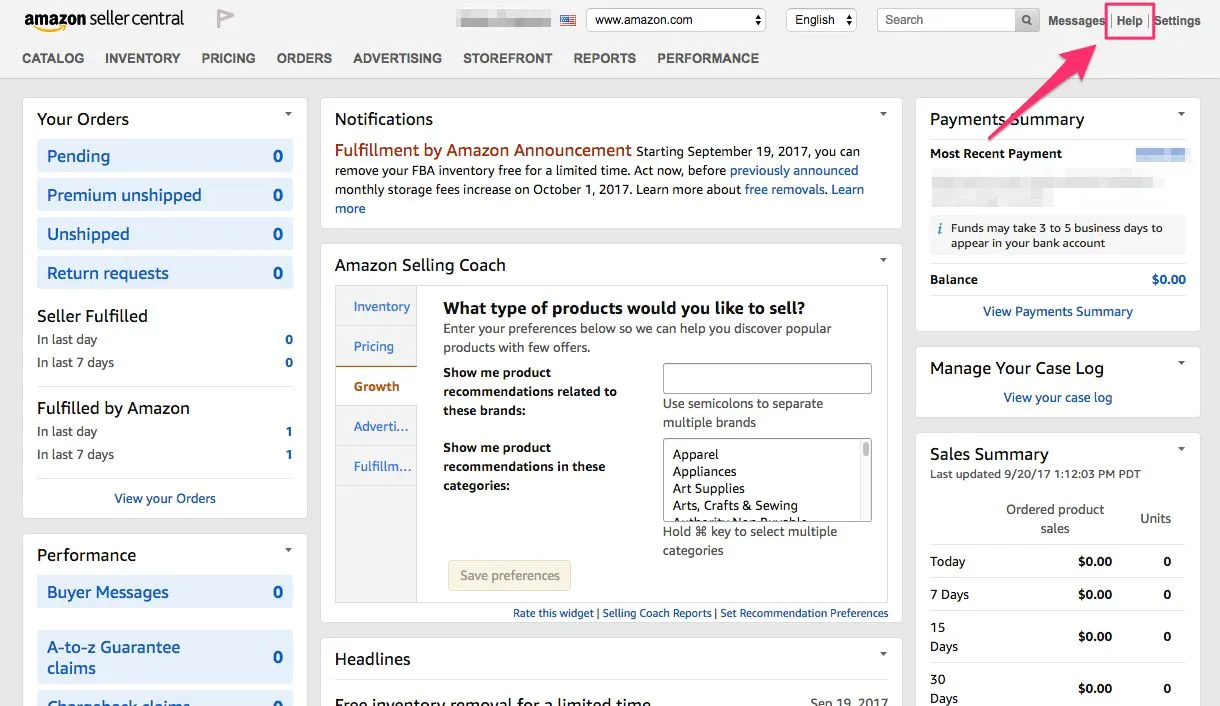
Despite the initial complexity, Seller Central offers powerful features that can help sellers grow their businesses, including the ability to monitor customer feedback, manage returns, and advertise products using Amazon’s PPC system. Amazon also provides a knowledge base with articles and tutorials to help sellers navigate the platform, though some users find that accessing customer support through Amazon can be slower compared to Shopify’s more responsive service.
Complexity
Scaling on Amazon presents unique challenges and opportunities. Amazon’s marketplace provides immediate access to millions of potential customers, but this level of exposure comes with increased competition. New sellers on Amazon must navigate a highly competitive environment, where established sellers with more reviews and better visibility often dominate search results. This can make it difficult for new sellers to stand out without investing heavily in Amazon PPC advertising or offering competitive pricing.
On the positive side, Amazon offers a wide range of tools to help sellers scale, including Fulfillment by Amazon (FBA), which handles logistics and shipping, allowing sellers to focus on growing their product lines and customer base. Additionally, Amazon’s global marketplace enables sellers to expand into international markets with relative ease.
However, scaling on Amazon also comes with potential drawbacks. Sellers must adhere to Amazon’s strict performance metrics, and failure to meet these standards can result in account suspension. Furthermore, sellers on Amazon have less control over branding and customer relationships compared to Shopify, which can be a limiting factor for businesses that want to establish a unique brand identity.
Control and Customization
One of the most significant factors in the Shopify vs Amazon debate is the level of control and customization each platform offers. For many businesses, control over the design, branding, and overall customer experience is critical to establishing a unique identity in the crowded eCommerce market. While Shopify gives merchants complete control over how their store looks and functions, Amazon operates within a structured marketplace, limiting a seller’s ability to customize and brand their presence. In this section, we will explore how both platforms handle store design, branding, third-party integrations, and data access, helping you decide which platform aligns with your customization needs.
Shopify
Shopify offers extensive control and customization, allowing merchants to fully design their storefront, manage branding, and integrate third-party apps for added functionality. This flexibility empowers businesses to create a unique and personalized customer experience.
Store Design
Shopify stands out in the Shopify vs Amazon comparison by offering unparalleled flexibility when it comes to store design. Shopify’s platform allows users to create a fully customized online storefront that reflects their brand’s unique identity. Merchants can choose from over 70 professionally designed themes, with many customizable options, including fonts, colors, and layouts. For those with coding expertise, Shopify provides access to the underlying HTML, CSS, and Liquid code, enabling complete customization of the store’s look and feel.
The drag-and-drop interface makes it easy for users with no technical skills to build an appealing store, but the ability to dive into the code allows advanced users to create complex, tailored designs. Whether you’re a small business looking for a simple, clean design or a large brand seeking a highly customized eCommerce experience, Shopify’s flexibility in store design sets it apart from Amazon, where sellers are confined to predefined templates.
Additionally, Shopify allows users to create different versions of their site for mobile and desktop, ensuring that the store is fully responsive and provides an optimized experience for customers across all devices. This flexibility in store design is a key reason why many businesses choose Shopify over Amazon when control over the customer experience is a priority.
Branding
Shopify offers complete control over branding, giving businesses the tools to create a distinct and cohesive brand identity. From the logo and color scheme to the tone of voice used in product descriptions, Shopify enables merchants to build a store that reflects their brand’s values and vision. Businesses can create custom domain names, ensuring that the store’s URL aligns with the brand identity rather than using a generic domain name tied to the platform, as is the case with Amazon.
In the Shopify vs Amazon debate, this level of control is crucial for businesses focused on long-term brand building. Shopify gives you full ownership of your store, allowing you to cultivate customer loyalty through a branded shopping experience. Additionally, Shopify’s customization options extend to checkout and post-purchase processes, ensuring that every step of the customer journey reinforces the brand.
For businesses that want to develop deep customer relationships and stand out from competitors, Shopify’s control over branding is a huge advantage. By contrast, Amazon sellers must operate within the confines of Amazon’s branding guidelines, which limits their ability to differentiate their store from others on the platform.
Third-Party Integrations
Shopify’s flexibility extends to third-party integrations, allowing users to enhance their store’s functionality by integrating with thousands of apps and tools. Shopify’s App Store offers solutions for every aspect of eCommerce, from marketing and SEO to inventory management and customer service. This wide variety of third-party apps enables businesses to customize their store’s functionality based on their specific needs.
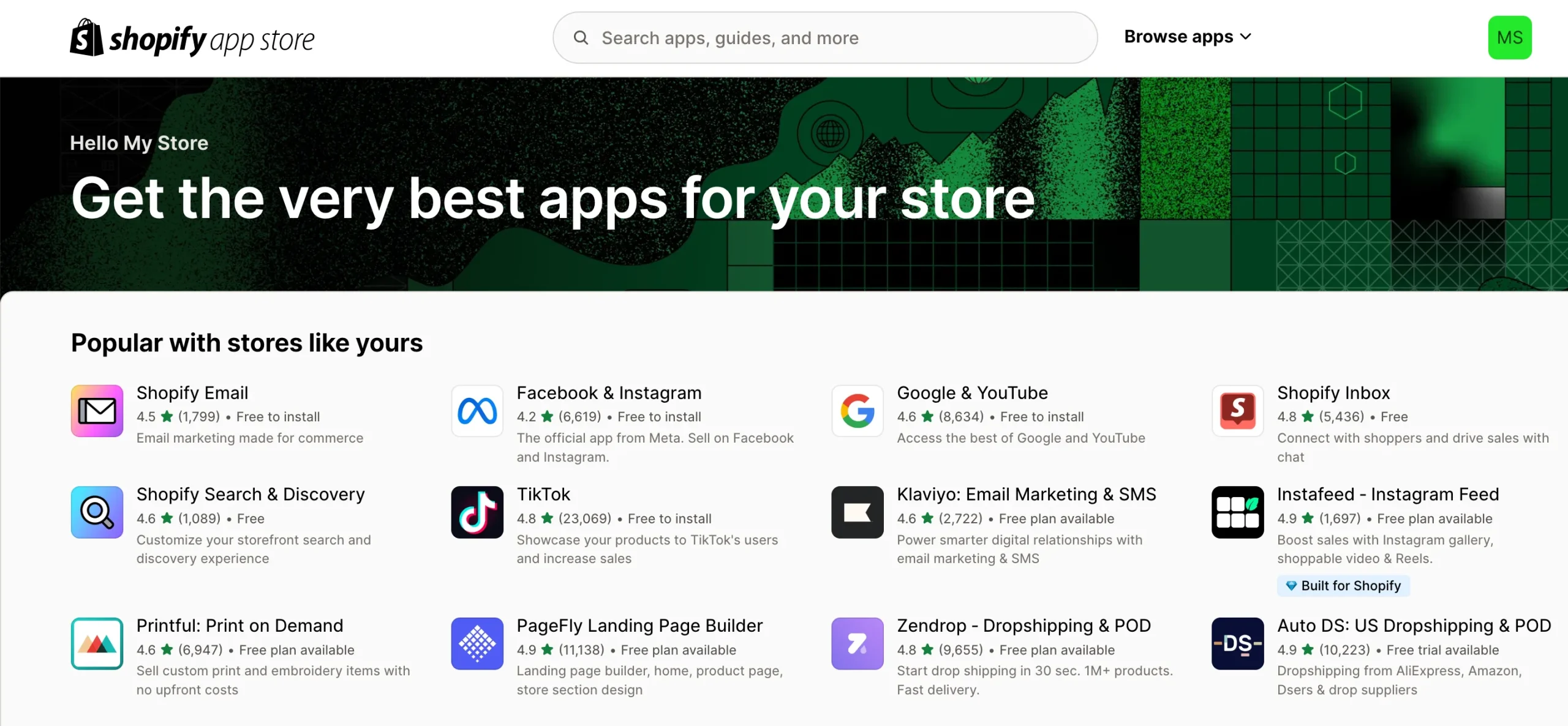
For example, businesses can integrate email marketing tools like Klaviyo or Mailchimp to run automated campaigns, connect with CRM systems to manage customer data, or use apps to optimize SEO for better search rankings. Shopify also integrates with a variety of payment gateways, shipping solutions, and accounting software, making it easy for businesses to manage all aspects of their operations within one platform.
In the Shopify vs Amazon comparison, Shopify’s vast ecosystem of third-party integrations gives merchants the ability to tailor their store to meet the exact needs of their business, while Amazon offers limited customization beyond product listings and fulfillment.
Amazon
Amazon provides limited control and customization, as sellers must operate within Amazon’s marketplace structure with restricted branding options. While tools like Amazon Storefronts and Brand Registry offer some customization, sellers have far less control over the customer experience compared to Shopify.
Product Listings
One of the biggest limitations of selling on Amazon is the lack of control over product listings and branding. Amazon’s marketplace is designed to prioritize consistency and ease of use for customers, which means that sellers have limited options when it comes to customizing their listings. While sellers can create detailed product descriptions, add images, and optimize keywords, they must adhere to Amazon’s strict guidelines regarding formatting, product categories, and image requirements.
In terms of branding, Amazon sellers must operate under the Amazon banner. Even though the business name may appear in the listing, the overall look and feel of the product page are heavily controlled by Amazon, which reduces the ability to differentiate the brand from others in the marketplace. This restriction makes it difficult for businesses to build a unique brand identity and stand out from competitors on Amazon.
For many businesses, this is a key factor in the Shopify vs Amazon debate. While Amazon provides access to a massive customer base, it comes at the cost of brand control. Sellers looking to create a highly branded experience may find Amazon’s limitations frustrating compared to the customization available on Shopify.
Storefront Customization
Amazon offers limited storefront customization options compared to Shopify. While Amazon sellers cannot customize individual product listings, brand owners enrolled in Amazon’s Brand Registry program can create an Amazon Storefront. This feature allows sellers to create a dedicated space on Amazon for their brand, complete with customized layouts, images, and videos. While this offers some flexibility, it still pales in comparison to the complete control Shopify offers over the design and functionality of the store.
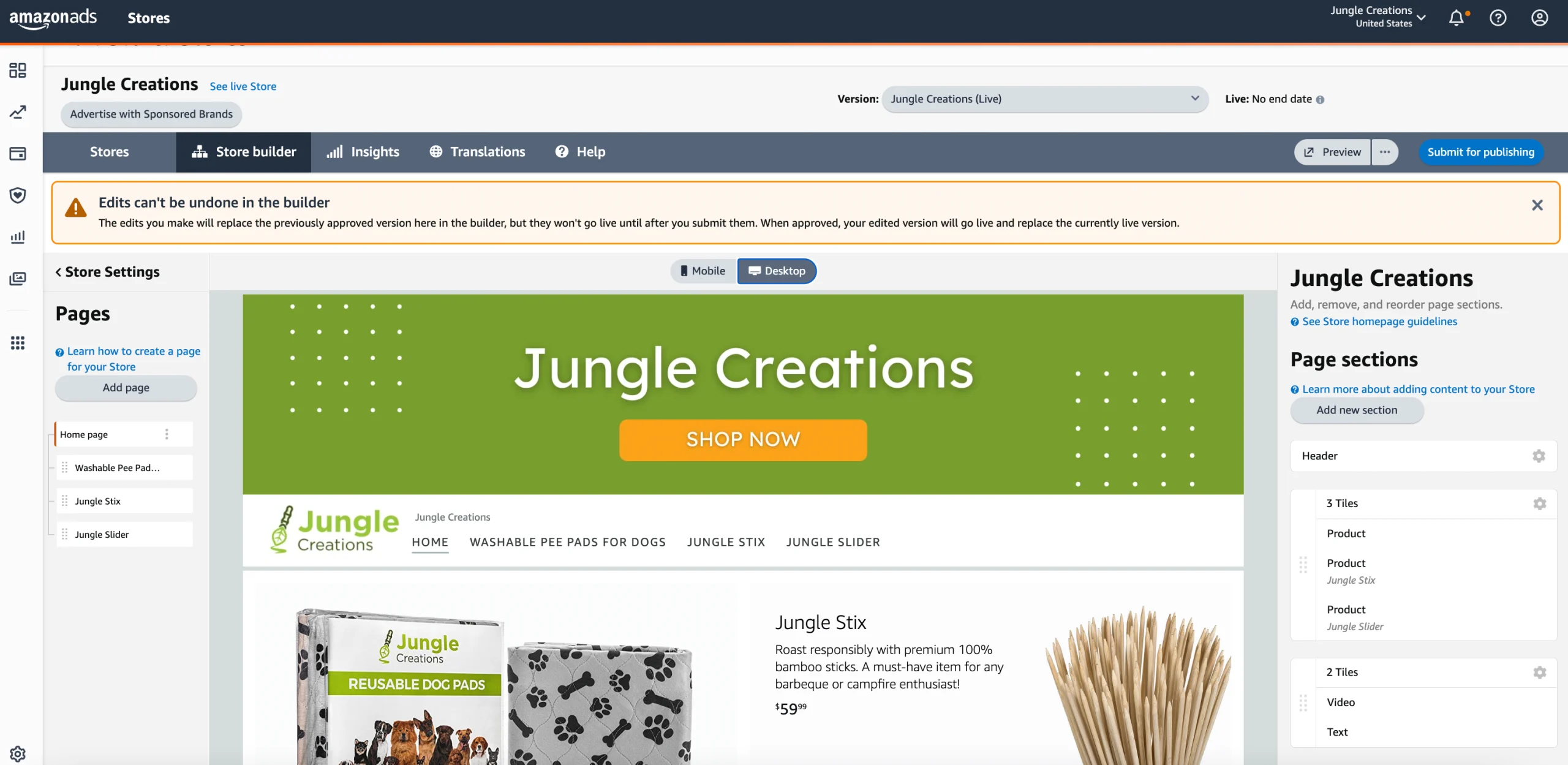
Amazon Storefronts are useful for sellers looking to showcase their product range and create a more cohesive shopping experience within the Amazon ecosystem. However, sellers must still operate within Amazon’s framework, limiting the extent of customization available. While this feature is a step toward giving sellers more control over branding, it does not match the freedom provided by Shopify in terms of store design and customization.
Data and Analytics
Access to customer data is another critical point of comparison between Shopify and Amazon. On Shopify, merchants have full access to customer data, including purchase history, contact information, and behavior analytics. This data is essential for businesses looking to build long-term customer relationships and develop targeted marketing strategies. Shopify’s built-in analytics tools provide detailed insights into sales, traffic sources, and customer behavior, helping merchants optimize their store’s performance.
On Amazon, sellers have significantly less access to customer data. Amazon prioritizes protecting customer information, which means that sellers do not receive direct access to customer contact details or other personal information. While Amazon provides sales data and some performance metrics, it does not offer the same level of detailed customer insights that Shopify does. This lack of data can be a significant disadvantage for businesses looking to build a customer database and engage in personalized marketing.
Sales Channels
In the Shopify vs Amazon debate, sales channels play a critical role in determining which platform best fits your business needs. Shopify allows merchants to sell across multiple sales channels, giving them control over their online store, integration with social media, and even brick-and-mortar operations through Point of Sale (POS) systems. On the other hand, Amazon focuses on its massive marketplace, providing sellers access to a global customer base, but with limitations on how businesses can brand themselves and interact with customers. In this section, we’ll examine the sales channels offered by both platforms to help you make an informed decision.
Shopify
Shopify offers businesses flexibility in selling through their own branded online store, integrating with social media platforms like Facebook and Instagram, and managing both online and offline sales via Shopify POS. This multichannel approach gives merchants full control over their brand while reaching customers across various platforms, making Shopify a versatile choice in the Shopify vs Amazon comparison.
Online Store: Primary Sales Channel Through the Branded Online Store
Shopify’s primary sales channel is the branded online store that businesses can fully customize and control. Shopify allows merchants to create their own websites where they can sell products directly to customers. The strength of Shopify in this area is the flexibility it offers in terms of store design, functionality, and the customer experience. Merchants have complete control over the look and feel of their store, including product listings, checkout processes, and post-purchase interactions. Unlike Amazon, where sellers compete within a marketplace, Shopify allows businesses to create a unique brand identity, which is a significant advantage in the Shopify vs Amazon comparison.
Having a dedicated online store means that businesses using Shopify can build customer loyalty by offering a more personalized shopping experience. Shopify provides tools for product management, SEO optimization, and marketing, enabling businesses to drive traffic directly to their store rather than relying on third-party marketplaces. The ability to create a customized online store is crucial for merchants who want to differentiate their brand and retain control over customer data and interactions.
Social Media Integration: Selling Directly Through Platforms Like Facebook, Instagram, and Pinterest
In addition to its customizable online store, Shopify provides robust integration with social media platforms, making it easier for merchants to sell products directly through channels like Facebook, Instagram, and Pinterest. Social media has become an increasingly important sales channel for eCommerce businesses, particularly for targeting younger demographics and driving impulse purchases.
Shopify’s social media integration allows merchants to sync their product catalog with social platforms, enabling customers to browse and purchase products without leaving the app. For example, with Shopify’s Facebook and Instagram integration, merchants can create shoppable posts and ads, driving engagement and conversions directly through these platforms. Similarly, Pinterest’s integration enables merchants to showcase products in shoppable pins, reaching customers who are already in discovery mode.
This multichannel approach gives Shopify a strong advantage in the Shopify vs Amazon debate, as it allows businesses to meet customers where they spend their time, creating a seamless shopping experience across platforms. While Amazon provides access to a large customer base through its marketplace, Shopify’s social media integration offers merchants more control over how they interact with potential buyers on social channels.
Point of Sale (POS): Integrating Online and Offline Sales Through Shopify POS
Another powerful sales channel offered by Shopify is its Point of Sale (POS) system, which allows businesses to integrate their online and offline sales seamlessly. Shopify POS enables merchants to sell in physical locations, such as retail stores or pop-up shops, while managing their inventory and customer data in one place. This integration is ideal for businesses that operate both online and offline, ensuring consistency across all sales channels.
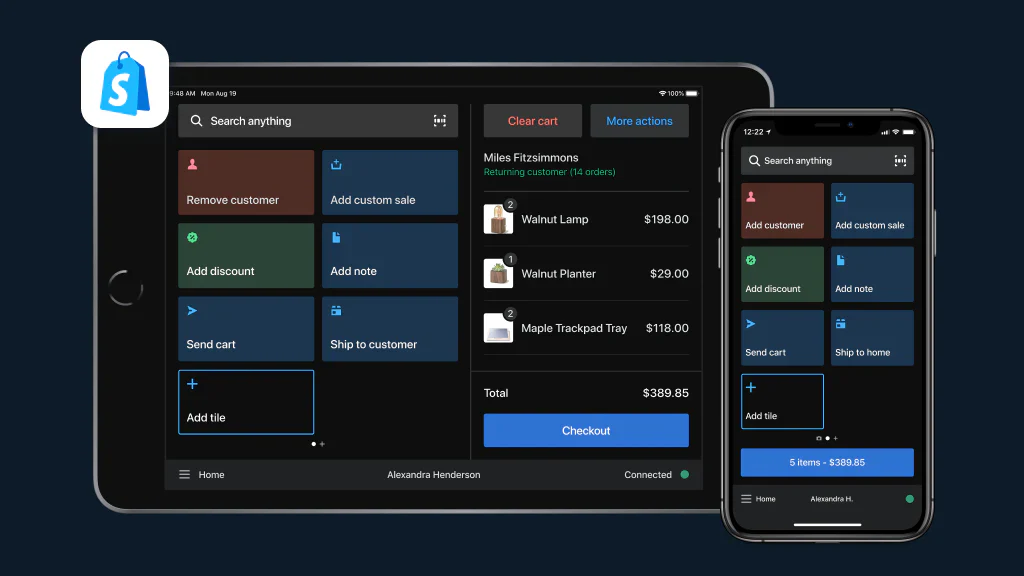
With Shopify POS, merchants can process payments, manage inventory, and track customer interactions in real-time, whether the sale happens in-store or online. The system allows businesses to offer flexible checkout options, including contactless payments and split payments, while syncing all transactions with the online store. This omnichannel approach gives businesses a competitive edge in the Shopify vs Amazon comparison, as it enables them to provide a seamless shopping experience across multiple touchpoints.
While Amazon’s strength lies in its online marketplace, Shopify’s ability to integrate brick-and-mortar operations through its POS system makes it a more versatile option for businesses looking to bridge the gap between online and offline sales.
Amazon
Amazon provides sellers with access to a vast marketplace, allowing them to reach millions of potential customers globally, including niche markets through Amazon Handmade and Custom. While it offers unparalleled reach, branding and customization are limited compared to Shopify.
Amazon Marketplace: Selling Directly on Amazon
Amazon’s core sales channel is its vast marketplace, where sellers can list their products directly on Amazon.com and other regional sites. As one of the world’s largest online retailers, Amazon provides immediate access to a massive customer base, with millions of active users searching for products on the platform daily. For many businesses, this is the primary reason for choosing Amazon over Shopify.
Selling on Amazon’s marketplace gives businesses access to a ready-made customer base, allowing them to bypass the need for building a standalone website or driving their own traffic. Amazon handles much of the heavy lifting when it comes to logistics, including payment processing, shipping, and customer service (especially for sellers using Fulfillment by Amazon). This ease of access to a large pool of potential customers is a significant advantage in the Shopify vs Amazon comparison.
However, while Amazon offers unparalleled reach, sellers on the platform must operate within Amazon’s ecosystem, meaning that they have limited control over branding, customer data, and the overall shopping experience. Products are listed alongside competitors’ offerings, and sellers must rely on Amazon’s algorithms to achieve visibility in search results.
International Marketplaces: Opportunities for Selling on Amazon’s Global Marketplaces
Another key benefit of selling on Amazon is the opportunity to tap into international markets. Amazon operates regional marketplaces in countries such as the UK, Germany, Japan, and Canada, allowing sellers to expand their business globally. For businesses looking to reach an international audience, Amazon’s global presence offers a streamlined way to enter new markets without the need to set up additional infrastructure.
With Amazon’s international selling programs, businesses can list their products in multiple regions, manage cross-border payments, and take advantage of Amazon’s global fulfillment network. This global reach is one of the reasons why many businesses choose Amazon over Shopify, particularly if their goal is rapid expansion into international markets. However, this also comes with its challenges, including navigating different tax regulations, shipping costs, and customer service expectations across regions.
In the Shopify vs Amazon comparison, Amazon’s global marketplace makes it a compelling option for businesses looking to scale internationally. However, Shopify also provides tools for international selling, including multi-currency support and global shipping integrations, giving businesses control over how they expand into new regions.
Amazon Handmade and Custom: Niche Selling Opportunities Within Amazon
For businesses specializing in handmade or custom products, Amazon offers niche opportunities through its Amazon Handmade and Amazon Custom programs. Amazon Handmade is a dedicated marketplace for artisans and makers to sell unique, handcrafted items. Sellers in this category are required to apply and be approved by Amazon, ensuring that only genuine handmade products are listed. This marketplace caters to customers looking for one-of-a-kind items, similar to platforms like Etsy, but with the added benefit of Amazon’s massive customer base.
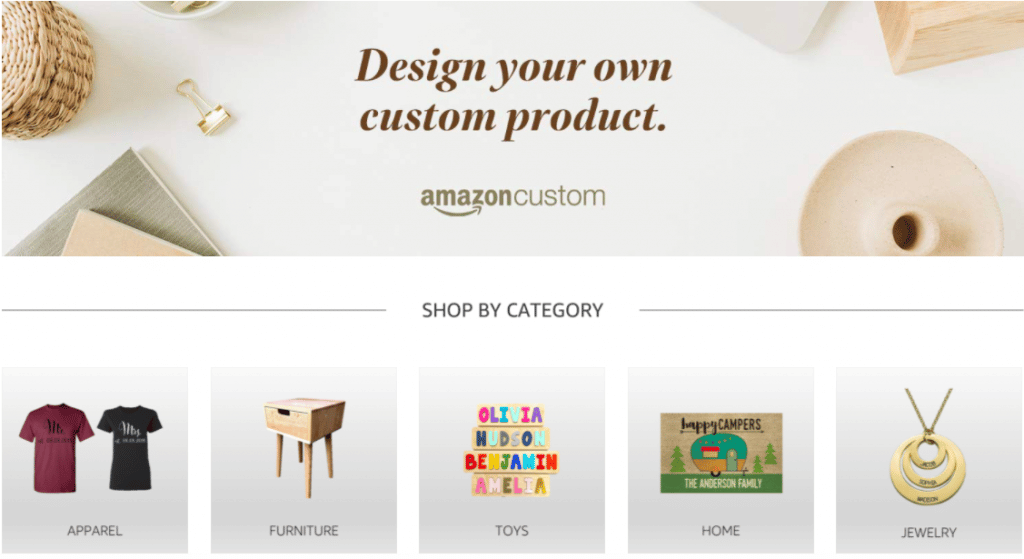
Amazon Custom, on the other hand, allows sellers to offer customizable products, enabling customers to personalize items before purchasing. This feature is particularly useful for sellers in categories like apparel, home décor, and gifts, where customization adds value. While these niche marketplaces offer sellers access to a more targeted audience, they still operate within the broader Amazon ecosystem, meaning that branding and customer interaction are limited compared to Shopify.
In the Shopify vs Amazon debate, these niche programs provide Amazon sellers with unique opportunities to reach specific customer segments. However, Shopify’s flexibility allows businesses to create custom product pages and integrate third-party apps for handmade or personalized products, giving them more control over the overall customer experience.
Marketing and SEO
In the battle of Shopify vs Amazon, marketing and SEO strategies play a significant role in determining the success of an online business. While Shopify empowers merchants with a wide array of SEO and marketing tools designed to help them build their brand and drive organic traffic, Amazon offers a more structured approach, centered around product visibility within its marketplace. Each platform’s approach to marketing and SEO impacts how businesses can attract and retain customers, and understanding these differences is crucial for choosing the right platform for your eCommerce strategy.
Shopify
Shopify provides merchants with comprehensive marketing and SEO tools, including customizable SEO features, email marketing integrations, social media promotions, and content marketing through its blogging platform, giving businesses full control over their marketing strategies. This flexibility makes Shopify an ideal choice for businesses looking to build long-term brand presence and drive organic traffic.
SEO Capabilities
Shopify is designed with robust SEO tools that allow businesses to optimize their online stores for search engines like Google. The platform enables users to easily edit meta tags, including meta titles and descriptions, for each product, page, and post. This customization allows businesses to optimize their content for search engine rankings, making it easier to attract organic traffic.
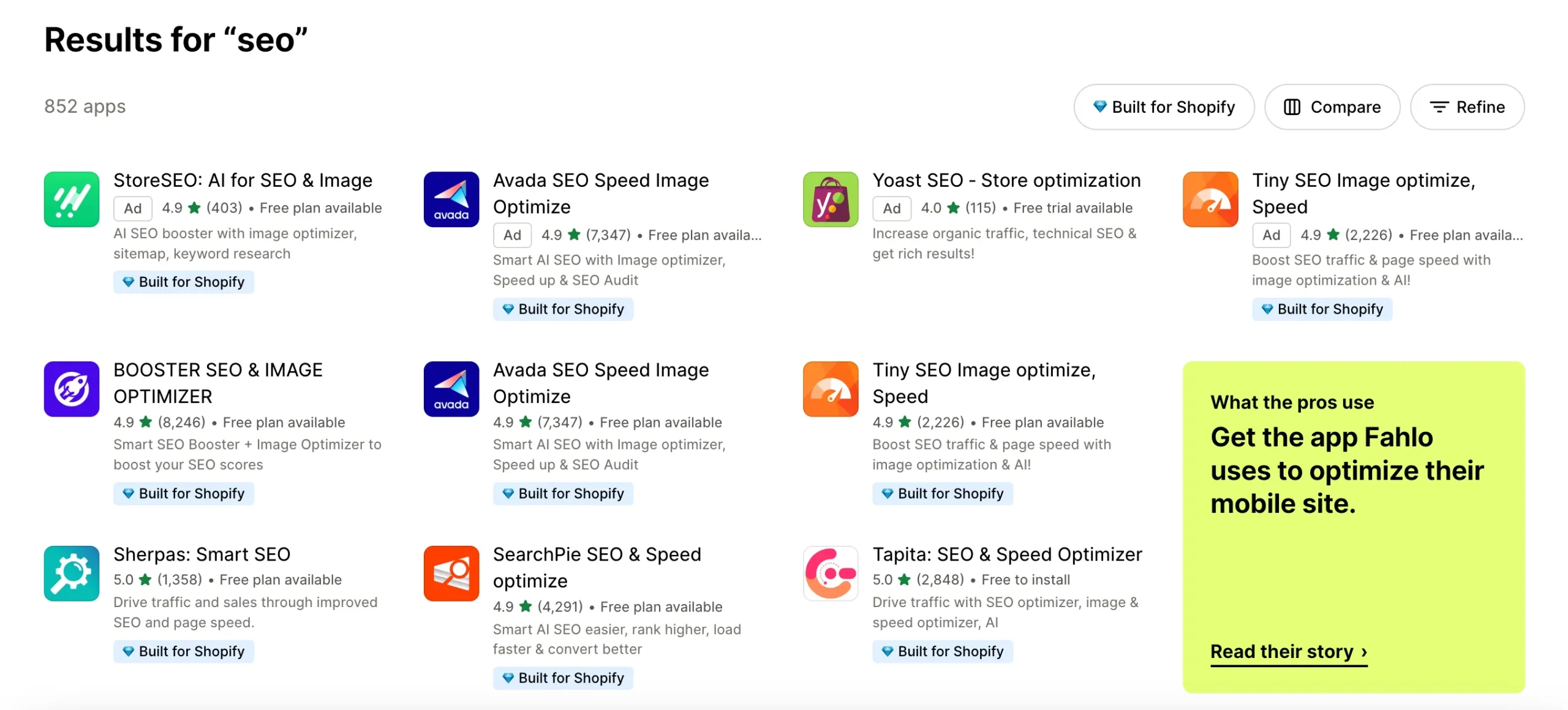
Shopify also provides automatic generation of sitemaps, which helps search engines index the store’s pages. URL customization is another important SEO feature on Shopify, allowing merchants to create clean, descriptive URLs that are friendly to both search engines and users. Furthermore, Shopify’s platform is built with SEO best practices in mind, including fast loading times and mobile responsiveness, both of which contribute to higher rankings on search engine result pages.
In the Shopify vs Amazon comparison, Shopify’s SEO capabilities provide merchants with complete control over how they optimize their store for search engines, making it an ideal choice for businesses looking to build long-term organic traffic. Amazon sellers, on the other hand, must focus on optimizing their listings for Amazon’s internal search engine, which has its own set of rules.
Email Marketing
Shopify integrates seamlessly with email marketing platforms, offering merchants the ability to send targeted email campaigns to their customers. Shopify’s built-in email marketing tools allow businesses to create and send promotional emails, abandoned cart reminders, and newsletters. With pre-built templates and automation features, merchants can easily segment their audience and tailor their email campaigns based on customer behavior.
For more advanced email marketing, Shopify integrates with popular platforms like Klaviyo, Mailchimp, and Omnisend, allowing businesses to create complex, data-driven campaigns that help nurture customer relationships. This level of integration makes Shopify a strong contender in the Shopify vs Amazon debate, as it gives businesses more control over their marketing efforts, allowing them to build lasting connections with their audience through personalized messaging.
Amazon, by contrast, does not provide sellers with the ability to collect customer emails for marketing purposes, limiting the opportunities for direct communication and relationship-building outside of the platform.
Social Media Marketing
One of Shopify’s key strengths in the Shopify vs Amazon comparison is its ability to integrate with social media platforms for easy promotion. Shopify allows merchants to sell directly through Facebook, Instagram, Pinterest, and TikTok, creating a seamless shopping experience for users on these platforms. With Shopify’s social media integration, businesses can create shoppable posts and ads that link directly to their store, enabling customers to make purchases without leaving the app.
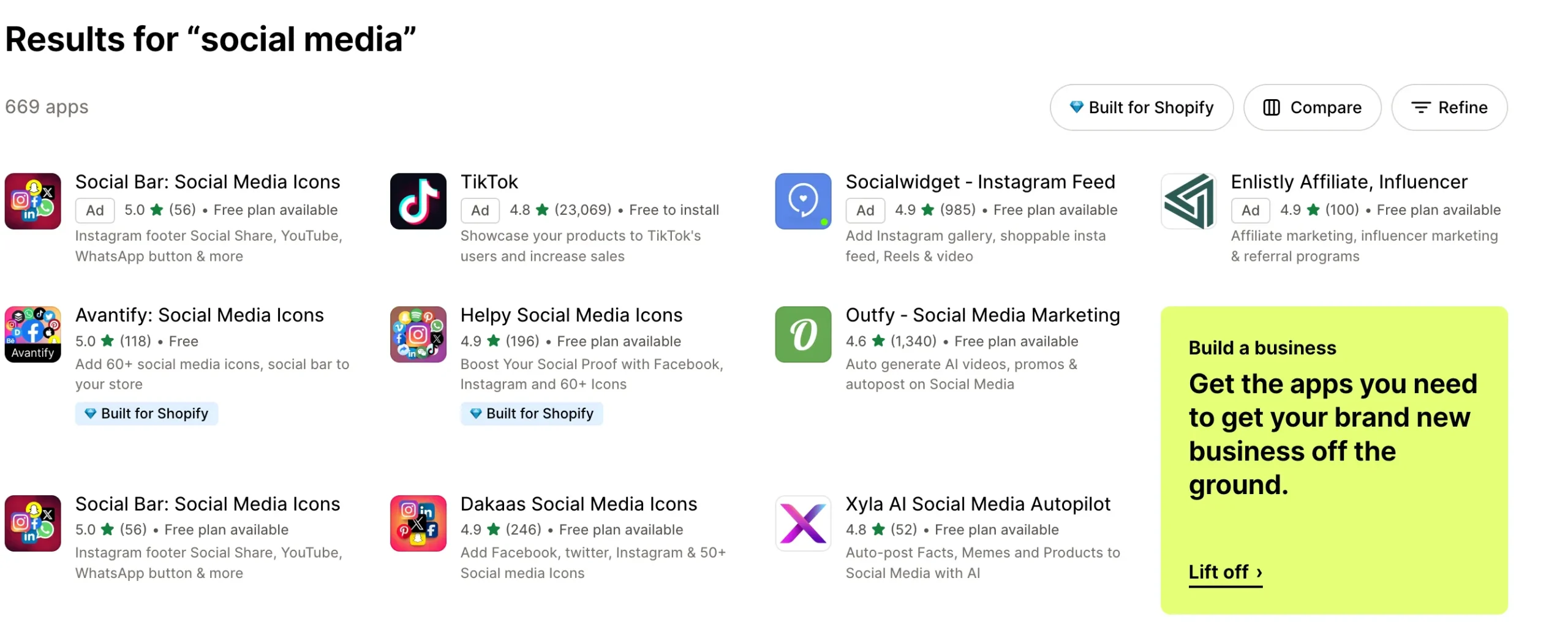
Shopify’s social media marketing tools help merchants reach new audiences and drive traffic to their stores, leveraging the power of social media to promote products and increase brand visibility. These integrations allow businesses to engage with customers where they spend their time, offering a multichannel marketing approach that enhances the customer experience.
In contrast, Amazon’s marketing tools are more focused on advertising within the platform, meaning that sellers have less flexibility when it comes to promoting their products across external channels.
Content Marketing
Content marketing is another area where Shopify excels in the Shopify vs Amazon debate. Shopify provides merchants with a built-in blogging platform, allowing them to create content that drives organic traffic to their store. Content marketing is a powerful strategy for boosting SEO, as it helps businesses rank for relevant keywords and build authority in their niche.
With Shopify’s blogging capabilities, businesses can publish articles, product guides, tutorials, and other valuable content that attracts visitors to their store. This content can be shared across social media, included in email marketing campaigns, or used to support product launches. By providing useful and engaging content, businesses can establish trust with their audience, leading to increased conversions and customer loyalty.
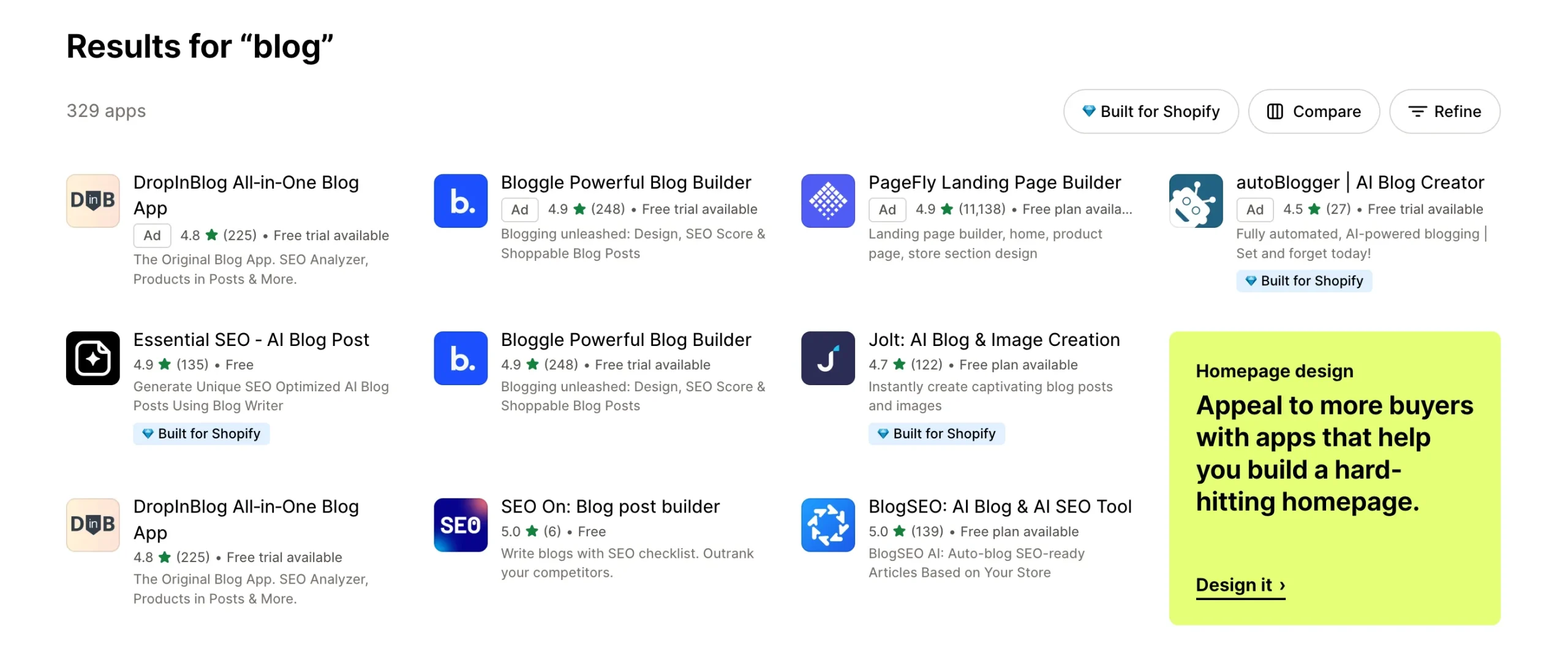
Amazon does not offer a blogging platform or support for content marketing in the same way Shopify does. While Amazon sellers can optimize their product listings with rich descriptions and imagery, they lack the ability to create long-form content to drive organic traffic from search engines or social media.
Amazon
Amazon’s marketing focuses on optimizing product visibility within its marketplace through Amazon SEO, pay-per-click (PPC) advertising, and customer reviews, while tools like Sponsored Products and Brand Registry help sellers increase exposure and protect their brand. This structured approach allows for rapid scaling but limits control over external marketing efforts.
Amazon SEO
Amazon’s search engine operates differently from traditional search engines like Google. Instead of focusing on backlinks or long-form content, Amazon’s A9 algorithm prioritizes product listings based on relevance, sales velocity, and customer reviews. Understanding how to optimize for Amazon SEO is crucial for sellers looking to improve their product rankings and visibility on the platform.
Amazon SEO involves optimizing product titles, descriptions, bullet points, and backend search terms with relevant keywords. Sellers must focus on identifying high-value keywords that customers are likely to search for when looking for their products. In addition, product performance metrics, such as conversion rates and overall sales, play a significant role in determining how products rank in Amazon’s search results.
In the Shopify vs Amazon comparison, Amazon’s SEO is more rigid, as sellers must work within the confines of Amazon’s system, focusing solely on their product listings to improve visibility. Shopify, by contrast, offers broader SEO capabilities that allow businesses to optimize not only their product pages but also their entire website.
Amazon PPC Advertising
Amazon’s pay-per-click (PPC) advertising options are a key tool for driving traffic and increasing product visibility on the platform. Sellers can run Sponsored Products, Sponsored Brands, and Sponsored Display ads to promote their products to a wider audience. Amazon PPC operates on a bidding system, where sellers bid on keywords related to their products. When a customer searches for those keywords, the highest bidders’ ads appear in prominent positions on the search results page.
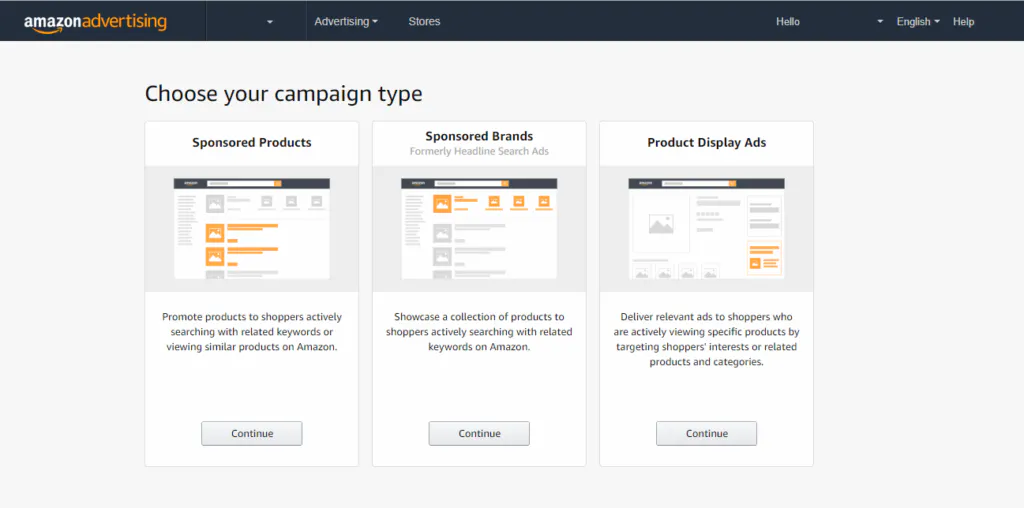
Sponsored Products are the most commonly used ad type, allowing sellers to promote individual product listings. Sponsored Brands ads, on the other hand, promote a brand’s storefront and can feature multiple products. Sponsored Display ads target customers based on their browsing behavior, allowing sellers to reach shoppers who have shown interest in similar products.
In the Shopify vs Amazon debate, Amazon’s PPC advertising provides sellers with a powerful way to boost product visibility within the marketplace. However, success with Amazon PPC requires careful keyword research, ongoing optimization, and a solid budget to compete in highly competitive categories.
Sponsored Products and Brand Registry
Amazon offers additional marketing tools through its Sponsored Products and Brand Registry programs. Sponsored Products ads allow sellers to promote individual listings, which appear prominently in search results or on product detail pages. This can help increase sales, especially for new or low-visibility products. Sellers can also use Amazon’s Brand Registry to protect their intellectual property, access enhanced brand content, and run Sponsored Brand ads that promote their entire catalog.
Amazon Brand Registry is particularly valuable for sellers looking to build brand recognition on the platform. It allows brands to create custom storefronts on Amazon, add rich content to product listings, and benefit from enhanced marketing tools that drive traffic to their storefront. In the Shopify vs Amazon debate, these tools give Amazon sellers a better chance to differentiate their products within a crowded marketplace.
However, even with Brand Registry, sellers have limited control over their brand identity compared to Shopify, where merchants have full creative control over their store’s design, messaging, and marketing strategy.
Customer Reviews and Ratings
Customer reviews and ratings play a central role in Amazon’s marketing ecosystem. Positive reviews are critical for driving sales and improving product rankings, as Amazon’s A9 algorithm considers the number and quality of reviews when determining search rankings. Sellers must actively manage customer feedback, encouraging satisfied buyers to leave reviews while addressing any negative feedback quickly to maintain a positive reputation.
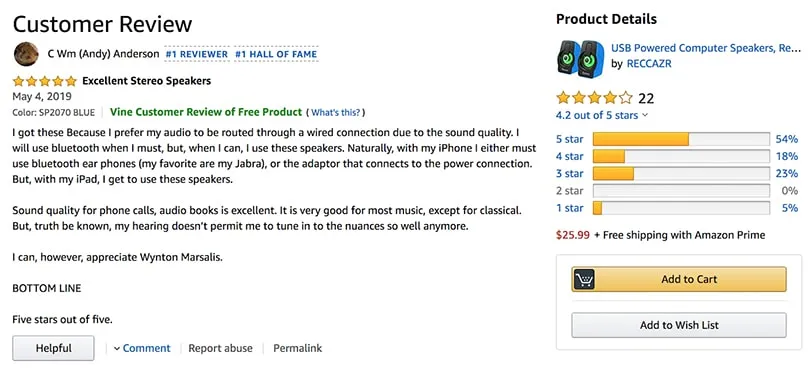
Strategies for acquiring reviews include sending follow-up emails after a purchase or using Amazon’s “Request a Review” feature. However, Amazon has strict guidelines about incentivizing reviews, and sellers must follow these rules carefully to avoid penalties. Reviews not only affect SEO and visibility on Amazon but also play a key role in building trust with potential customers.
In the Shopify vs Amazon comparison, Shopify does not place the same emphasis on customer reviews for SEO, though reviews are still important for building trust and social proof on Shopify stores. Shopify merchants can integrate review apps like Yotpo or Judge.me to collect and display customer reviews, but they have more control over how reviews are managed and displayed compared to Amazon’s stricter policies.
Scalability and Growth Potential
One of the most crucial aspects to consider when comparing Shopify vs Amazon is each platform’s scalability and potential for long-term business growth. Whether you’re a small business looking to expand or an established brand with ambitions of going global, both Shopify and Amazon offer opportunities to scale. However, the way they approach growth is fundamentally different. Shopify provides flexibility for businesses to grow within their own ecosystem, while Amazon offers rapid access to a global market but with certain restrictions that can affect control and profitability.
Shopify
Shopify provides flexible scalability, allowing businesses to grow from small to large operations through its customizable platform and advanced tools like Shopify Plus, supporting omnichannel sales and international expansion. This makes Shopify a strong choice for merchants seeking control over their growth and brand identity in the Shopify vs Amazon comparison.
Growth Path with Shopify
Shopify is built to accommodate businesses of all sizes, making it an ideal platform for scalability. Whether you’re starting with a small online store or managing a large, complex operation, Shopify offers the tools and flexibility to grow your business at your own pace. One of the key strengths of Shopify in the Shopify vs Amazon comparison is its ability to scale seamlessly, allowing merchants to add new products, services, and sales channels as their business expands.
For small businesses, Shopify’s easy-to-use interface, coupled with its extensive app ecosystem, allows for rapid growth without the need for extensive technical expertise. As the business grows, merchants can upgrade their Shopify plan to access more advanced features, such as professional reports, automation tools, and reduced transaction fees. Shopify’s growth path is highly customizable, meaning businesses can expand their operations without being forced to fit into predefined structures.
Another significant advantage of Shopify is that it doesn’t impose limits on inventory, bandwidth, or product listings. As a business scales, it can add unlimited products and services to its store without worrying about exceeding platform limitations. The flexibility offered by Shopify makes it an attractive choice for businesses looking to scale, as it provides the tools needed to grow organically while maintaining control over brand identity, customer data, and business operations.
Shopify Plus for Enterprises
For businesses that have outgrown Shopify’s standard plans, Shopify Plus provides an enterprise-level solution tailored to high-volume merchants. Shopify Plus is designed for large-scale businesses that need more advanced features, including dedicated support, greater customization options, and increased automation capabilities. This makes Shopify Plus a powerful option for scaling businesses that require a robust platform to handle thousands of transactions and manage complex operations.
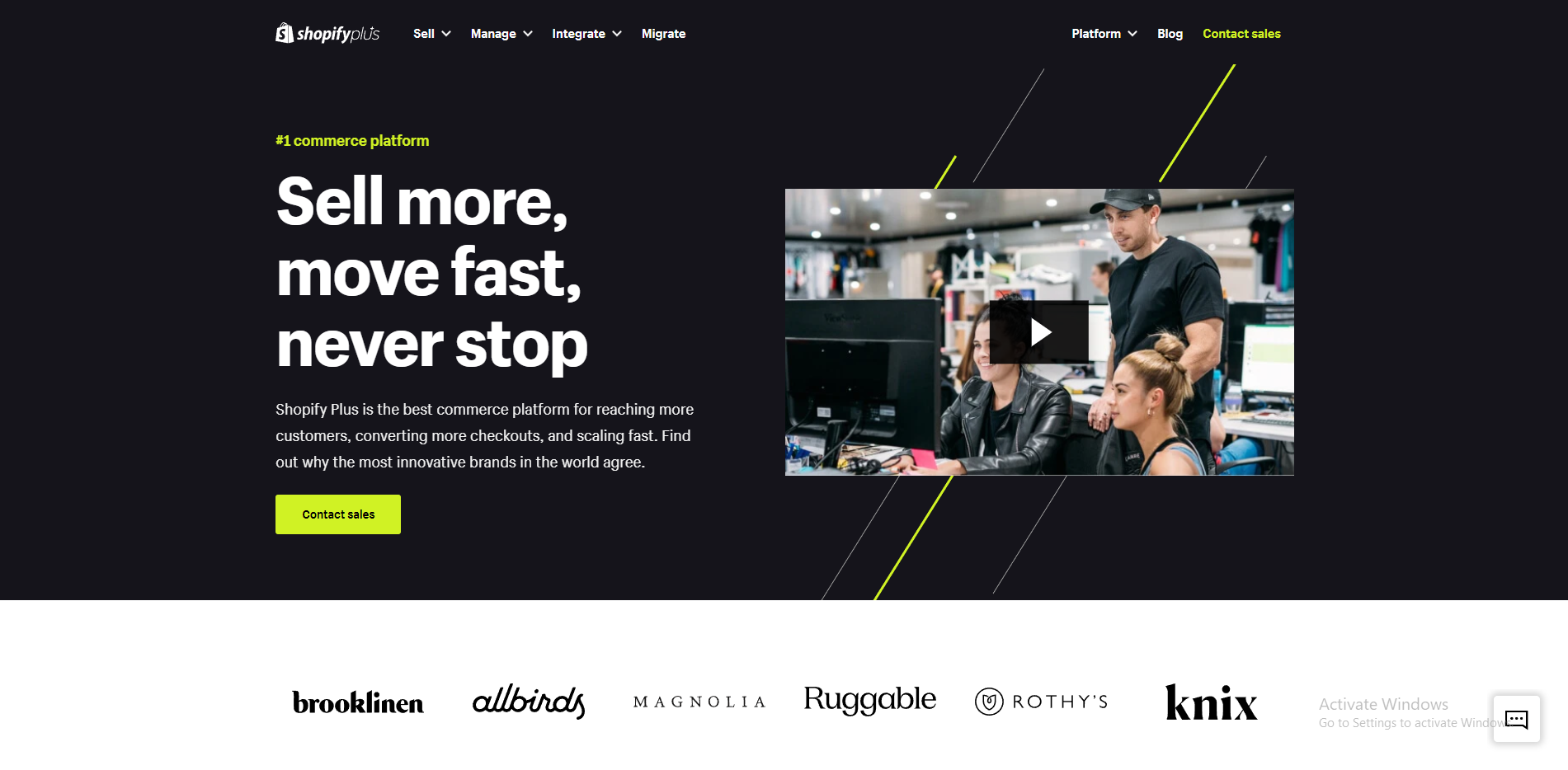
Shopify Plus offers features like unlimited bandwidth, custom checkout experiences, and access to Shopify’s API, allowing businesses to fully integrate their store with other systems like ERP, CRM, and inventory management software. Additionally, Shopify Plus merchants receive dedicated account management and priority support, ensuring they have the resources needed to scale efficiently.
A key benefit of Shopify Plus in the Shopify vs Amazon debate is its ability to support omnichannel sales strategies. High-volume businesses can manage multiple storefronts, sell across different channels (such as social media, marketplaces, and in-store via POS), and expand into new markets with ease. Shopify Plus is designed for growth, making it a compelling choice for enterprises seeking to expand their reach and scale their operations.
Expanding Sales Channels
One of the primary strengths of Shopify when it comes to scalability is the platform’s ability to integrate multiple sales channels. Merchants can expand their business by selling across various platforms, including social media, online marketplaces (like Amazon and eBay), and in physical retail locations through Shopify’s Point of Sale (POS) system. This multichannel approach allows businesses to reach new customers without sacrificing control over their brand or customer data.

Shopify also supports international expansion, making it easy for businesses to reach customers in different countries. The platform provides features like multi-currency support, international shipping options, and tax automation, ensuring that merchants can operate seamlessly in global markets. Shopify’s ability to integrate brick-and-mortar and online sales, along with its support for international commerce, gives it a significant advantage in the Shopify vs Amazon comparison for businesses looking to grow and scale across multiple channels and geographies.
Amazon
Amazon offers rapid scalability through its vast marketplace and global selling programs, allowing businesses to quickly expand product lines and enter international markets. However, growth on Amazon can be challenging due to intense competition and limited control over branding and customer relationships.
Scaling on Amazon
Amazon’s platform is designed to accommodate businesses of all sizes, but it is especially powerful for those looking to scale quickly. Selling on Amazon allows businesses to tap into a massive customer base, with over 300 million active users globally. This immediate access to a large audience can provide rapid growth opportunities for sellers who are able to effectively market their products and leverage Amazon’s fulfillment network.
For businesses looking to scale on Amazon, the platform offers tools to expand product lines, increase sales volume, and enter new markets. Sellers can continuously add new products to their catalog, utilize Amazon’s Fulfillment by Amazon (FBA) service to handle logistics, and take advantage of Amazon’s advertising tools to increase visibility. In the Shopify vs Amazon debate, Amazon’s strength lies in its ability to provide rapid scalability, allowing businesses to grow without needing to build their own customer base from scratch.
However, scaling on Amazon comes with challenges. Sellers must navigate an intensely competitive environment, where competing products are often listed alongside their own. Success on Amazon depends on a variety of factors, including product visibility, pricing, and customer reviews. As a business grows, it must invest heavily in maintaining its position in Amazon’s search rankings, making scaling on Amazon a continuous effort that requires strategic investment in advertising and competitive pricing.
Challenges with Growth
While Amazon provides significant growth potential, it also presents certain obstacles that businesses must consider. One of the biggest challenges in scaling on Amazon is the platform’s reliance on competition-driven algorithms. Product listings are ranked based on sales volume, reviews, and pricing, which means that sellers must consistently invest in maintaining competitive prices and securing positive customer reviews to remain visible.
Additionally, Amazon’s rules and policies can change frequently, affecting sellers’ ability to scale smoothly. The platform’s strict performance metrics mean that sellers must maintain high standards for fulfillment, customer service, and product quality. Failure to meet these metrics can result in penalties, including account suspension, which can disrupt business operations. The high level of competition on Amazon, coupled with the need to comply with Amazon’s rules, makes scaling more complex compared to Shopify, where businesses have more control over their growth trajectory.
Another potential drawback of scaling on Amazon is the limited control over branding and customer data. While businesses can grow their sales volume on Amazon, they must do so within Amazon’s ecosystem, meaning that they have less control over customer interactions and the overall shopping experience. This can limit a brand’s ability to build long-term relationships with customers, as Amazon acts as the intermediary in all transactions.
Global Selling Programs
Amazon’s Global Selling program provides businesses with the opportunity to expand their reach to international markets. Through this program, sellers can list products on Amazon’s various regional marketplaces, including Amazon UK, Germany, Japan, and Canada. This global reach allows businesses to scale internationally without needing to set up separate eCommerce platforms for each market.
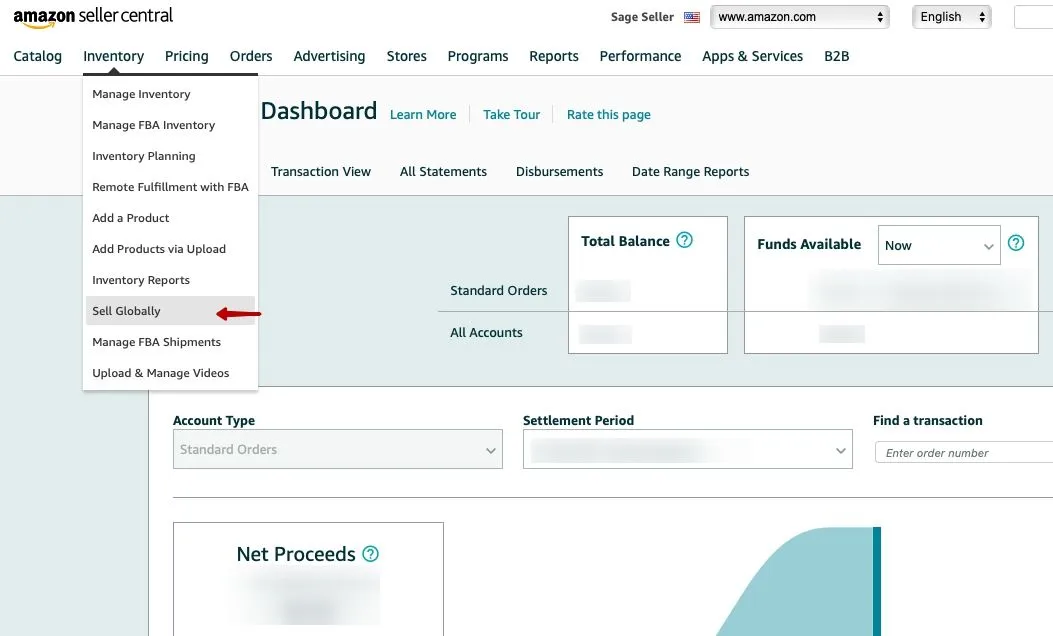
The Global Selling program simplifies international commerce by providing tools for currency conversion, cross-border payments, and international shipping. Sellers can manage their international sales through a single dashboard, making it easier to track performance and inventory across different regions. For businesses looking to scale globally, Amazon’s infrastructure and international selling programs offer a streamlined path to expansion.
However, there are challenges associated with international selling on Amazon. Businesses must navigate the complexities of international shipping, taxes, and customs regulations, which can add operational burdens. Additionally, competition in international markets may differ from domestic markets, requiring sellers to adapt their pricing and marketing strategies to succeed globally.
Security and Compliance
When comparing Shopify vs Amazon, the topic of security and compliance is crucial for eCommerce businesses looking to protect their data, prevent fraud, and ensure legal compliance. Both platforms invest heavily in security, but they offer different tools and measures to meet the needs of their users. Shopify focuses on protecting merchant and customer data, offering tools for fraud prevention and ensuring businesses remain compliant with international regulations. Amazon, on the other hand, operates within a highly regulated marketplace, with strict seller policies and robust intellectual property protections. Below, we will explore the security and compliance measures of both Shopify and Amazon to provide a clear understanding of how each platform handles these critical aspects.
Shopify
Shopify offers robust security measures, including SSL encryption, PCI compliance, fraud prevention tools, and support for international legal compliance, giving merchants full control over data protection and privacy. This makes Shopify a secure choice for businesses prioritizing both data security and compliance with global regulations.
Data Protection and Privacy
Data protection and privacy are top priorities for Shopify. Shopify employs industry-leading security standards, including SSL certificates, to encrypt data transmitted between the online store and its customers. This ensures that sensitive information, such as credit card details and personal data, is protected from hackers and cyber threats. Every Shopify store comes with an SSL certificate that not only secures customer information but also helps improve SEO rankings, as Google prioritizes secure websites.
In addition to SSL encryption, Shopify is fully PCI DSS compliant, which is a requirement for all businesses that handle credit card transactions. PCI compliance ensures that Shopify merchants can safely process payments, knowing that customer data is handled in accordance with global security standards. Shopify’s commitment to data protection gives merchants peace of mind, knowing that their eCommerce stores are secure from potential breaches.
In the Shopify vs Amazon debate, Shopify’s approach to data protection allows businesses to take full control of customer data, offering greater transparency and compliance with global privacy laws, such as the GDPR for European businesses.
Fraud Prevention
Shopify provides a variety of tools to help merchants protect their stores from fraudulent transactions and chargebacks. One of the most useful features is Shopify’s built-in fraud analysis tool, which flags suspicious orders and provides merchants with risk assessments. The system analyzes various indicators, such as the customer’s location, IP address, and order history, to determine the likelihood of fraud. If an order is marked as high-risk, merchants can take precautionary actions, such as reviewing the order manually or declining it altogether.
In addition to Shopify’s fraud analysis tool, the platform integrates with third-party fraud prevention services like Signifyd, which offers a guarantee against chargebacks on fraudulent orders. These tools help protect businesses from financial losses and ensure that merchants can confidently process payments without worrying about fraud.
Shopify also offers 3D Secure, an additional layer of authentication for online payments, which requires customers to verify their identity during checkout. This extra security step reduces the risk of unauthorized transactions and protects merchants from fraudulent chargebacks.
Compliance and Legal Support
As businesses expand internationally, ensuring compliance with various legal and regulatory frameworks becomes increasingly important. Shopify helps merchants stay compliant with international laws and regulations by providing tools that simplify tax collection, data privacy, and shipping requirements. For example, Shopify’s automated tax features allow merchants to collect and remit taxes in different jurisdictions, helping them meet their tax obligations with minimal effort.
Shopify also complies with global privacy laws like GDPR, ensuring that merchants can operate in European markets without violating data protection regulations. Shopify provides built-in features, such as cookie consent banners and data access requests, to help businesses comply with GDPR requirements.
Additionally, Shopify’s legal support includes terms of service and privacy policy generators, which help businesses create compliant documentation for their online stores. While Shopify does not provide direct legal advice, these tools offer valuable support for businesses looking to navigate the complexities of international eCommerce regulations.
Amazon
Amazon provides strong security measures, including multi-factor authentication, real-time monitoring, and strict seller policies to protect accounts and data, while also offering robust intellectual property protection through its Brand Registry and Transparency programs. These features ensure a secure marketplace environment but require strict adherence to Amazon’s compliance rules.
Amazon’s Security Measures
Amazon has established itself as a trusted marketplace for millions of buyers and sellers worldwide, and security is a key component of its success. Amazon uses advanced encryption technologies and multi-factor authentication to protect seller accounts from unauthorized access. Sellers are required to create strong passwords, and Amazon frequently prompts them to update their security settings to prevent breaches.
Amazon’s security measures also include real-time monitoring of account activity. If unusual behavior is detected—such as attempts to access the account from unfamiliar IP addresses—Amazon will temporarily lock the account and require additional verification before access is restored. This helps prevent unauthorized access to sensitive information, such as payment details and inventory data.
In the Shopify vs Amazon comparison, both platforms prioritize security, but Amazon’s marketplace model requires additional security layers to protect both buyers and sellers, given the scale and volume of transactions processed daily.
Seller Policies and Compliance
Amazon has strict policies that sellers must adhere to in order to maintain their accounts in good standing. These policies cover everything from product listings and intellectual property to customer service and shipping times. Sellers who fail to comply with Amazon’s policies risk account suspension, which can severely impact their business.
One of the most important aspects of compliance on Amazon is maintaining high performance metrics. Sellers are evaluated based on several criteria, including order defect rate, late shipment rate, and valid tracking rate. Sellers must meet Amazon’s performance targets to avoid penalties, and failure to do so can result in account suspension or even permanent removal from the marketplace.
Amazon also enforces compliance with local laws and regulations, particularly when it comes to selling in international markets. Sellers are responsible for understanding and adhering to the legal requirements of each country they operate in, including product safety standards, labeling requirements, and tax regulations.
While these policies ensure a safe and reliable marketplace for buyers, they also place a significant burden on sellers, who must constantly monitor their performance to avoid penalties. In the Shopify vs Amazon debate, Shopify offers more flexibility in terms of compliance, as merchants have full control over their store policies and operations, while Amazon’s marketplace enforces stricter seller compliance rules.
Intellectual Property Protection
Amazon takes intellectual property (IP) protection seriously, offering tools to help sellers protect their trademarks, patents, and copyrights within the marketplace. Through the Amazon Brand Registry program, sellers can register their brands and gain access to enhanced IP protection features, such as the ability to report infringement and control the use of their trademarks on the platform.
Brand Registry also enables sellers to create custom storefronts, improve their product listings with rich content, and increase their visibility through sponsored ads. By enrolling in the Brand Registry, sellers can protect their brand from counterfeit products and unauthorized sellers, ensuring that customers receive genuine products.
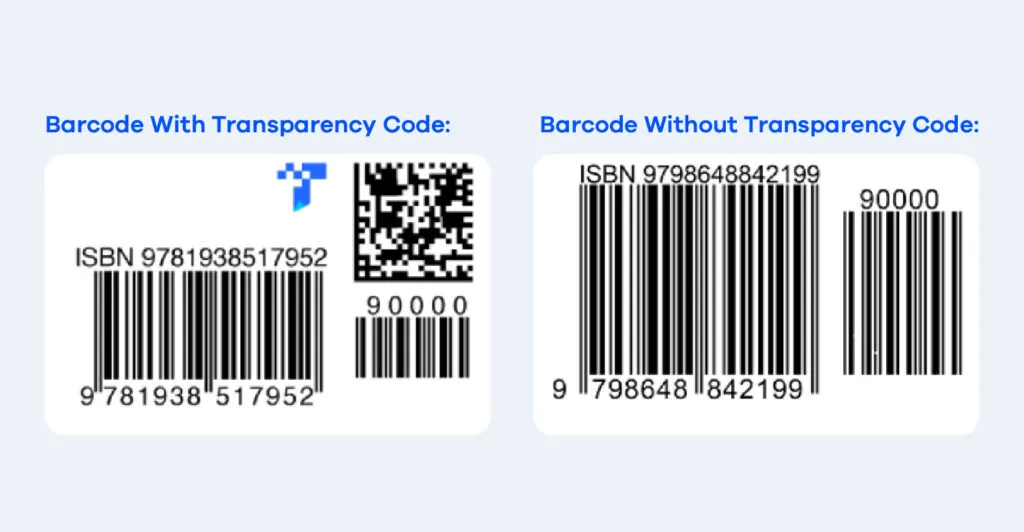
In addition to Brand Registry, Amazon offers a Transparency program, which helps prevent counterfeit goods by assigning unique codes to each product unit. Customers can scan these codes to verify the authenticity of the product, further strengthening brand protection.
In the Shopify vs Amazon comparison, Amazon’s IP protection tools are more comprehensive due to the marketplace’s scale and the risks associated with counterfeit products. Shopify, while offering full control over branding, does not face the same level of counterfeit risk because merchants sell through their own stores rather than a shared marketplace.
Shopify vs Amazon: Final Evaluation
Summary
Here’s a summarized table comparing Shopify vs Amazon across various key aspects:
Aspect | Shopify | Amazon |
Platform Features | Customizable online stores with themes, app integrations, payment gateways, and robust inventory tools. | Marketplace model with vast customer reach, product listings, FBA services, and strong fulfillment network. |
Ease of Use | Intuitive drag-and-drop interface with easy setup and management, even for beginners. | Straightforward onboarding, but Seller Central interface can be complex and requires more management effort. |
Control & Customization | Full control over store design, branding, and third-party app integrations for a unique experience. | Limited customization and branding control within Amazon's structured marketplace, with some tools like Storefronts. |
Sales Channels | Multichannel sales through online stores, social media, POS, and integration with marketplaces like Amazon and eBay. | Primarily focused on its own marketplace with additional options for niche products like Amazon Handmade. |
Marketing & SEO | Strong SEO tools, email marketing, social media integration, and content marketing via a blogging platform. | SEO focused on Amazon's A9 algorithm, PPC advertising options, Sponsored Products, and customer reviews. |
Scalability & Growth | Flexible scalability, including Shopify Plus for enterprises, with support for omnichannel and global expansion. | Rapid scalability through access to a large customer base and international marketplaces, but high competition. |
Security & Compliance | SSL encryption, PCI compliance, fraud prevention, and support for international compliance laws. | Multi-factor authentication, real-time monitoring, strict seller policies, and strong IP protection through Brand Registry. |
This table compares Shopify and Amazon across key aspects like platform features, ease of use, control, sales channels, marketing, scalability, and security, highlighting Shopify’s customization and multichannel flexibility versus Amazon’s vast marketplace reach but limited customization.
Shopify vs Amazon: Pros and Cons
When deciding between Shopify vs Amazon, it’s essential to weigh the pros and cons of each platform, as they cater to different business models and goals. Shopify offers a customizable and brand-centric approach to eCommerce, while Amazon provides instant access to a massive marketplace but comes with certain restrictions. Below, we’ll explore the pros and cons of both Shopify and Amazon to help you determine which platform aligns better with your business needs.
Shopify Pros and Cons
When comparing Shopify vs Amazon, understanding Shopify’s pros and cons is essential for businesses looking to build a unique brand identity and manage their own store. Shopify offers complete control over customization and scalability, but it also comes with some additional costs and potential reliance on third-party apps.
Pros:
- Full Customization and Control: One of Shopify’s standout advantages in the Shopify vs Amazon comparison is the level of customization it offers. Shopify allows businesses to create fully branded online stores with complete control over design, functionality, and user experience. This flexibility extends to themes, third-party apps, and the ability to customize checkout processes, giving merchants the freedom to tailor their store to their unique brand and customer journey.
- Comprehensive Sales Channels: Shopify supports multichannel selling, allowing businesses to sell not only through their online store but also across social media platforms like Facebook, Instagram, and Pinterest, as well as marketplaces like Amazon and eBay. Shopify’s Point of Sale (POS) system integrates seamlessly with physical retail locations, enabling businesses to manage online and offline sales from a single platform. This omnichannel capability makes Shopify a versatile choice in the Shopify vs Amazon debate.
- Robust SEO and Marketing Tools: Shopify provides merchants with a wide range of SEO tools to help improve search engine visibility, including customizable meta tags, clean URLs, and integrated blogging. Shopify also supports email marketing, social media marketing, and integration with advertising platforms like Google and Facebook. This suite of tools empowers businesses to build organic traffic and retain customers through targeted marketing efforts.
- Ownership of Customer Data: Unlike Amazon, Shopify allows merchants to collect and own customer data, including email addresses, purchase histories, and demographic information. This data is invaluable for personalizing marketing efforts and building long-term customer relationships. Merchants can use this information to run email marketing campaigns, segment their audience, and create targeted promotions.
- Scalability for Growing Businesses: Shopify is built to grow with your business, offering a scalable solution for companies of all sizes. From small startups to enterprise-level businesses, Shopify’s flexible pricing plans and features make it easy to scale without switching platforms. Shopify Plus, designed for high-volume merchants, offers advanced features such as automation tools, custom checkout experiences, and priority customer support, making it an attractive option for growing businesses in the Shopify vs Amazon comparison.
Cons:
- Costs Can Add Up: While Shopify’s pricing plans are affordable for small businesses, additional costs can accumulate as a business grows. Third-party apps, premium themes, and transaction fees for using external payment gateways can increase the overall cost of running a Shopify store. For larger businesses, these costs may become a factor when comparing Shopify vs Amazon.
- Dependence on Third-Party Apps: Although Shopify’s app store offers thousands of integrations, some businesses may find that they need to rely on third-party apps for features that aren’t built into Shopify’s core platform. This can lead to additional costs and complexity, as managing multiple apps can become cumbersome, especially if there are compatibility issues between them.
- Steeper Learning Curve for Advanced Customization: While Shopify’s basic setup is user-friendly, merchants who want to take full advantage of the platform’s customization options may need to learn coding languages like Liquid, HTML, or CSS. This can be a barrier for businesses without technical expertise, requiring them to hire developers for more advanced customizations.
Amazon Pros and Cons
In the Shopify vs Amazon comparison, Amazon provides businesses with rapid access to a vast customer base and streamlined logistics through FBA, but it comes with high competition, limited branding control, and significant fees. While Amazon is ideal for fast scaling, sellers must navigate strict policies and a highly competitive marketplace.
Pros:
- Access to a Massive Customer Base: The most significant advantage of Amazon in the Shopify vs Amazon comparison is the immediate access to a vast customer base. Amazon boasts over 300 million active users, providing sellers with unparalleled exposure to potential buyers. For businesses looking to scale quickly and reach a global audience, Amazon’s marketplace offers an opportunity to tap into a ready-made customer pool without the need to build an audience from scratch.
- Fulfillment by Amazon (FBA) for Simplified Logistics: Amazon’s Fulfillment by Amazon (FBA) program simplifies logistics by handling storage, packing, shipping, and customer service on behalf of sellers. This allows businesses to focus on growing their product lines and increasing sales, rather than managing the complexities of fulfillment. Products fulfilled through FBA are also eligible for Amazon Prime, which increases their visibility and appeal to customers seeking fast, free shipping.
- Trust and Credibility of Amazon’s Platform: Customers trust Amazon’s platform, which can help new or lesser-known businesses build credibility quickly. Selling on Amazon gives businesses the benefit of Amazon’s reputation, making it easier to convert shoppers who may be unfamiliar with the brand. This trust factor is a significant advantage in the Shopify vs Amazon debate, particularly for new sellers entering the market.
- Global Reach Through International Marketplaces: Amazon operates in multiple countries, allowing sellers to expand internationally through its global marketplaces. Sellers can list products in regions like Europe, Asia, and the Americas, using Amazon’s infrastructure to handle cross-border shipping, taxes, and customs regulations. For businesses looking to scale globally, Amazon provides a streamlined path to international expansion.
- Amazon’s Advertising Tools: Amazon offers a robust suite of advertising tools, including Sponsored Products, Sponsored Brands, and Sponsored Display ads, to help sellers increase product visibility. Sellers can target specific keywords, product categories, or customer segments, boosting their chances of ranking higher in search results and driving more sales. These pay-per-click (PPC) advertising options are a powerful way to stand out in Amazon’s competitive marketplace.
Cons:
- High Competition and Fees: While Amazon’s massive marketplace is an advantage, it also comes with significant competition. Sellers often compete with thousands of other products in the same category, making it challenging to stand out without investing heavily in advertising. Additionally, Amazon charges referral fees on each sale, as well as fulfillment fees for those using FBA, which can eat into profit margins.
- Limited Control Over Branding and Customer Experience: One of the biggest drawbacks of selling on Amazon in the Shopify vs Amazon comparison is the lack of control over branding and customer experience. Amazon standardizes product listings, limiting how much sellers can differentiate their brand. Additionally, Amazon owns the customer relationship, meaning sellers do not have access to customer data like email addresses, making it difficult to build long-term customer loyalty.
- Strict Seller Policies and Account Risk: Amazon has strict performance metrics and policies that sellers must adhere to, including order defect rates, late shipment rates, and customer feedback. Sellers who fail to meet Amazon’s standards risk having their accounts suspended or permanently banned, which can be devastating for businesses reliant on the platform. Navigating Amazon’s rules and avoiding penalties can be challenging, particularly for new sellers.
- Dependency on Amazon’s Ecosystem: Many sellers on Amazon rely heavily on the platform for their entire business, creating a dependency that can be risky. Changes in Amazon’s algorithms, policies, or fees can significantly impact a seller’s profitability. Additionally, since Amazon controls the marketplace, it can choose to compete directly with sellers by offering its own branded products, further reducing the seller’s ability to differentiate and maintain control.
- Increased Costs for Advertising and Fulfillment: While Amazon’s FBA program simplifies logistics, the associated fees can be high, especially for large or heavy products. Additionally, sellers may need to invest heavily in advertising to gain visibility in Amazon’s competitive marketplace. These costs can add up quickly, reducing profit margins and making it more difficult for smaller businesses to compete.
Price Comparison: Shopify vs Amazon
When evaluating Shopify vs Amazon, price plays a crucial role in determining which platform best aligns with a business’s needs and budget. Both platforms offer different pricing structures and associated costs, which can significantly impact long-term profitability. Understanding the pricing models, total costs, and potential hidden expenses is essential for choosing the right platform.
Aspect | Shopify | Amazon |
Basic Monthly Subscription | $39/month (Basic), $105/month (Shopify), $399/month (Advanced Shopify), Custom for Shopify Plus | $0.99/item sold (Individual Plan), $39.99/month (Professional Plan) |
Transaction Fees | 2.9% + $0.30 per transaction (external gateways); No fees with Shopify Payments | 6% to 45% referral fees based on product category |
Fulfillment Fees | No built-in fulfillment; depends on third-party logistics | Fulfillment by Amazon (FBA) fees vary based on product size/weight ($2.50 to $10+) |
Additional Costs | Premium themes ($100-$350), paid apps ($0-$299+) | No additional apps or themes; seasonal storage fees |
Advertising Costs | Optional advertising on platforms like Google, Facebook | Amazon PPC (Pay-per-click) advertising, costs vary by category and competition |
Long-term Value & ROI | Full control over branding, customer data, and marketing; strong scalability | Large customer base access, but limited control over branding and customer data |
Potential Hidden Costs | Costs may increase with third-party apps, premium themes, and development needs | High fulfillment and advertising fees, especially in competitive categories, which can reduce profit margins |
Features Included | Basic Plan: Online store, unlimited products, abandoned cart recovery, gift cards; Advanced Plan: Advanced reports, third-party shipping rates | Individual Plan: Basic listing; Professional Plan: Bulk listings, advertising, advanced selling tools, API access |
This table now includes an additional row that lists the features included in each pricing plan for Shopify and Amazon. Let me know if you’d like any other updates!
In the Shopify vs Amazon price evaluation, both platforms present different pricing models, each with unique advantages and potential drawbacks. Shopify offers predictable subscription pricing with the flexibility to customize and scale as businesses grow, while Amazon operates on a fee-based model with access to a massive customer base but higher competition and costs.
The total cost of using Shopify includes subscription fees, transaction fees (if not using Shopify Payments), and additional costs such as premium themes and third-party apps for extended functionality. Shopify also allows for full customization and control, which can lead to extra costs if businesses opt for advanced features or custom development work. However, Shopify’s long-term value often comes from its ability to scale without imposing limitations on branding, customer interaction, and marketing opportunities. This makes it a strong platform for businesses looking for full control over their online presence.
On the other hand, Amazon’s cost structure is largely based on referral fees (typically 6% to 45% depending on the product category), fulfillment fees for FBA users, and optional advertising costs (such as PPC campaigns). While Amazon allows businesses to tap into a large, existing customer base, its fee structure can significantly reduce profit margins, particularly for businesses with low-margin products. Additionally, sellers on Amazon must navigate its competitive landscape, which often requires heavy investment in advertising to stand out. Moreover, Amazon’s lack of control over branding and customer data limits long-term customer relationship-building, which can hinder efforts to establish brand loyalty.
Recommendation
Choosing the right platform between Shopify vs Amazon depends on your business goals, budget, and the nature of your products. Both platforms offer distinct advantages and cater to different types of sellers. In this section, we’ll provide recommendations to help you decide whether Shopify or Amazon is the best fit for your business needs, based on their unique features and your specific requirements.
Choosing between Shopify vs Amazon ultimately depends on various factors, such as the nature of your products, business goals, target audience, and how much control you want over your brand and customer experience. Both platforms offer unique advantages but cater to different business models. Below, we’ll break down the scenarios in which Shopify or Amazon would be the better option, based on the key differences between the two platforms.
Choose Shopify When
- You Want Full Control Over Your Brand and Store Design: If building a unique and recognizable brand is central to your business strategy, Shopify is the clear choice in the Shopify vs Amazon debate. Shopify gives you complete control over your storefront, from the design and user experience to the branding and messaging. With a variety of themes and the ability to fully customize your store with custom HTML, CSS, and Liquid coding, Shopify enables businesses to create a highly tailored shopping experience. This level of customization is not possible on Amazon, where sellers must operate within a predefined marketplace framework.
- You Want to Own Your Customer Relationships: One of Shopify’s major strengths is that it allows you to own your customer data. Unlike Amazon, where customer information is controlled by the platform, Shopify gives merchants full access to customer email addresses, purchase histories, and other valuable data. This means you can build and nurture long-term customer relationships through email marketing, personalized promotions, and targeted advertising. If customer retention and direct communication are crucial for your business, Shopify is the better option.
- You Are Focused on Multichannel Sales: Shopify is ideal for businesses looking to sell across multiple channels. With Shopify, you can integrate your store with various platforms such as Facebook, Instagram, Pinterest, and even marketplaces like Amazon and eBay. Shopify’s Point of Sale (POS) system also allows you to manage both online and in-person sales, making it perfect for businesses that want to merge their brick-and-mortar operations with their eCommerce efforts. This multichannel approach is more versatile compared to Amazon, which focuses solely on its marketplace.
- You Plan to Scale Gradually: If you’re looking to grow your business gradually and on your own terms, Shopify’s flexible pricing plans and scalability make it an excellent choice. Shopify provides a growth path from small businesses to enterprise-level companies through Shopify Plus, which offers enhanced features for large-scale operations. You can start with Shopify’s Basic plan and upgrade as your business expands, ensuring that the platform grows with you. In contrast, while Amazon provides access to a massive audience, sellers are more dependent on the platform’s rules and marketplace dynamics, making it harder to grow independently.
- You Need Advanced Marketing and SEO Tools: Shopify offers a wide range of built-in marketing tools, including customizable SEO features, email marketing, and social media integration. Its blogging platform also supports content marketing, enabling businesses to drive organic traffic and build brand authority. Shopify allows you to implement SEO best practices, customize URLs, and use apps to optimize product listings for search engines. If building organic traffic through SEO and managing in-depth marketing campaigns is important for your business, Shopify offers far more control and flexibility than Amazon.
- You Prefer a Subscription-Based Pricing Model: Shopify offers transparent, subscription-based pricing tiers that make it easier to predict costs. You pay a monthly fee based on your chosen plan, and while additional costs may arise from apps, themes, or transaction fees, the subscription model offers a more predictable financial outlook. In contrast, Amazon’s fee-based structure involves referral fees, fulfillment fees, and advertising costs, which can quickly add up and reduce profit margins. If budget predictability is a priority for your business, Shopify’s pricing model offers more stability.
- You Want to Avoid Direct Competition in a Marketplace: On Shopify, your store is your own — meaning you are not competing directly with hundreds of similar products listed alongside yours, as is the case with Amazon. Amazon is a massive marketplace with many sellers offering the same or similar products, often resulting in price wars or needing to heavily invest in advertising to stand out. With Shopify, you can create a distinctive online presence and build your own customer base without the risk of being overshadowed by competitors within a marketplace.
Choose Amazon When
- You Want Immediate Access to a Large Customer Base: Amazon’s biggest advantage in the Shopify vs Amazon comparison is its enormous customer base. With over 300 million active users worldwide, Amazon offers instant access to a global audience. If your primary goal is to reach a large number of customers quickly, Amazon provides an unparalleled opportunity to scale. Businesses looking to generate sales immediately, without having to build their own website traffic, may benefit greatly from selling on Amazon’s marketplace.
- You Want to Leverage Amazon’s Fulfillment Network: For businesses that want to simplify logistics, Amazon’s Fulfillment by Amazon (FBA) service is a major draw. FBA handles storage, packing, shipping, and customer service on behalf of sellers, making it easier to manage orders and focus on scaling the business. Products fulfilled through FBA are also eligible for Amazon Prime, which increases visibility and appeals to customers who prefer fast, free shipping. If fulfillment and logistics are a challenge for your business, using Amazon’s FBA program can reduce operational headaches and improve customer satisfaction.
- You Have High-Volume, Fast-Moving Products: Amazon is ideal for businesses that deal in high-volume, fast-moving products. Its marketplace is designed for sellers who can generate large quantities of sales and benefit from economies of scale. If your business thrives on selling large quantities of items, such as electronics, household goods, or everyday products, Amazon’s marketplace model can help you reach a large customer base and move inventory quickly. Amazon’s global reach allows businesses to expand into multiple international markets, providing an additional avenue for growth.
- You Don’t Mind Limited Control Over Branding: While Shopify excels in giving merchants full control over branding, Amazon does not. However, if your products are highly commoditized or if branding is not a top priority for your business, Amazon’s marketplace model may still be a good fit. Many customers shopping on Amazon prioritize price and convenience over brand loyalty. If you’re willing to trade off control over branding for access to a massive customer base and streamlined logistics, Amazon can be a valuable platform for growing your business.
- You Want to Focus on Sales Without Managing a Website: One of Amazon’s key advantages is that it eliminates the need for sellers to manage their own website, design, or hosting. With Amazon, you don’t need to worry about building and maintaining an online store, setting up payment gateways, or handling web development. Instead, you can focus on optimizing your product listings and increasing sales. For businesses that want a simplified selling experience and are not concerned about having their own branded storefront, Amazon offers a more hands-off approach.
- You Are Comfortable with Competitive Advertising: Amazon offers a robust set of advertising tools, including Sponsored Products, Sponsored Brands, and Sponsored Display ads, which help sellers gain visibility in a highly competitive marketplace. However, advertising on Amazon can be costly, and it is essential for sellers to have a strategy in place to manage ad spend. If you’re prepared to invest in Amazon PPC and other advertising methods to boost product visibility, Amazon can help you reach a larger audience and drive more sales. This option is ideal for businesses that have competitive products and are willing to spend on marketing to stand out in a crowded marketplace.
- You Are Selling in Niche Markets: Amazon also caters well to businesses that specialize in niche markets. With categories like Amazon Handmade and Amazon Custom, sellers can reach customers looking for one-of-a-kind, handmade, or personalized products. These niche categories can help sellers stand out in a marketplace dominated by mass-produced items. If your products cater to a specific market or customer demographic, Amazon’s built-in audience may provide the traction you need to succeed.
Combining Shopify and Amazon
When comparing Shopify vs Amazon, many businesses face the tough decision of choosing between these two powerful platforms. However, the good news is that Shopify and Amazon don’t have to be mutually exclusive. In fact, combining them can create a powerhouse eCommerce solution, allowing businesses to leverage the strengths of both platforms simultaneously, much like combining peanut butter and jelly to create something fantastic. By integrating Amazon into your Shopify store, you can harness the flexibility and branding control of Shopify with the massive reach and logistical benefits of Amazon.
Shopify offers a seamless integration with Amazon, enabling merchants to use both platforms simultaneously. This integration allows Shopify store owners to sell on Amazon, opening up opportunities for massive exposure while still maintaining control over their own branded website. By adding the Amazon Sales Channel to your Shopify store, you can manage your eCommerce operations from a single dashboard, synchronizing product listings, inventory, and sales between Shopify and Amazon.
Key Benefits of Using Shopify and Amazon Together include:
- Leverage the Best of Both Worlds: When you combine Shopify vs Amazon, you benefit from the unique advantages of each platform. Shopify gives you the freedom to build a fully customizable online store, manage your own branding, and own your customer relationships, while Amazon provides access to its massive customer base, with millions of active shoppers searching for products daily. This combination allows you to maintain full control of your store’s look and feel while simultaneously selling on the world’s largest marketplace.
- Sync Inventory and Product Information: One of the standout features of the Shopify-Amazon integration is the ability to sync your inventory and product information across both platforms. Once you add the Amazon Sales Channel to your Shopify store, you can link your existing products on Shopify to Amazon, keeping inventory levels updated in real-time across both platforms. This means you’ll avoid overselling and ensure that your product listings on Shopify and Amazon are always accurate and up to date.
- Streamline Product Listings: With the Amazon Sales Channel on Shopify, you can create Amazon listings directly from your Shopify dashboard. There’s no need to switch between two platforms or manually upload product information separately. You can generate new listings, manage offers, and adjust pricing on Amazon right from Shopify’s intuitive interface. This makes it incredibly easy for businesses to expand their reach onto Amazon without the complexity of managing two separate systems.
- Grow Your Reach and Customer Base: Using both Shopify and Amazon together allows you to diversify your sales channels and reach a wider audience. While your Shopify store helps you build a loyal customer base and establish your brand, selling on Amazon exposes your products to a massive audience that’s already searching for items like yours. Amazon is especially beneficial for businesses looking to generate quick sales and attract impulse buyers who may not discover your products on other platforms.
- Centralized Order Management: Managing orders across multiple platforms can be challenging, but the Shopify-Amazon integration helps streamline this process. You can manage orders from both Shopify and Amazon in one centralized location within Shopify’s dashboard. This simplifies fulfillment, customer service, and tracking, making it easier to stay on top of orders from both platforms without the need to jump between multiple systems.
- Increase Brand Visibility: Having your products available on both Shopify and Amazon means that you’ll be seen by a wider range of potential customers. You can maintain a strong, branded online presence on Shopify while tapping into Amazon’s search engine and customer traffic. This strategy is particularly effective for businesses that want to maintain control over their branding on their own store while also benefiting from the trust and reputation that Amazon offers.
- Maximize Sales Opportunities: Selling on Amazon doesn’t mean you need to sacrifice your branded store. In fact, by combining Shopify vs Amazon, you maximize your sales opportunities. You can capture customers who prefer shopping on branded websites while also reaching those who prefer the convenience and speed of shopping on Amazon. This multichannel approach ensures that you are covering all your bases, attracting customers from various shopping preferences, and increasing your overall sales potential.
- Fulfilling Orders with Fulfillment by Amazon (FBA):
Another great advantage of combining Shopify and Amazon is the ability to use Fulfillment by Amazon (FBA) to streamline your order fulfillment process. You can sell products on your Shopify store and have Amazon handle the storage, packaging, and shipping through their FBA service. This is especially useful for businesses with high sales volumes or those looking to simplify logistics. With FBA, you can meet customer expectations for fast, reliable shipping while maintaining control over your branded Shopify store.
The integration process is straightforward and can be completed with just a few steps:
- Create an Amazon Seller Account: First, you need to sign up for an Amazon Professional Seller account, as only professional sellers can integrate with Shopify. This account comes with a monthly fee of $39.99, which is an important consideration when calculating the overall cost of combining Shopify and Amazon.
- Add the Amazon Sales Channel: Once you have an Amazon Seller account, go to your Shopify dashboard and add the Amazon Sales Channel. This will allow you to manage your Amazon listings and sync your product catalog between Shopify and Amazon.
- Sync Products and Listings: Next, you’ll be able to sync your Shopify products with Amazon, either by linking existing listings or creating new ones. You can manage product categories, prices, and offers for Amazon directly within Shopify, saving you time and effort.
- Manage Inventory and Orders: After the integration is set up, you’ll be able to manage your inventory and orders from both platforms in one place. Shopify will automatically update inventory levels across both platforms, ensuring that your listings remain accurate and consistent.
It’s important to note that using both Shopify and Amazon together involves paying for both platforms. In addition to your monthly Shopify subscription, you will need to pay for Amazon’s Professional Seller plan, which costs $39.99/month. On top of that, you’ll also be responsible for Amazon’s referral fees (typically ranging from 6% to 45%, depending on the product category) and any applicable fulfillment fees if you’re using FBA. While the combined costs can add up, the increased exposure and sales opportunities may outweigh these expenses, especially for businesses looking to scale quickly.
For businesses ready for greater exposure and growth, combining Shopify with Amazon is a wise investment. By leveraging Shopify’s branding and customization tools along with Amazon’s massive customer base and powerful logistics network, you can create a robust multichannel eCommerce strategy. This combination gives you the best of both worlds, allowing you to scale your business, increase brand visibility, and capture more sales across multiple platforms.
In conclusion, Shopify vs Amazon doesn’t have to be an either-or decision. Combining the two platforms creates an efficient and powerful eCommerce strategy that enables businesses to maximize their reach while maintaining control over their brand. For merchants looking to grow, this integration provides the tools and exposure needed to achieve long-term success.
Conclusion
When evaluating Shopify vs Amazon, the decision of which platform to choose can feel overwhelming, but it ultimately comes down to what best suits your business goals and operational needs. Both Shopify and Amazon offer immense benefits for businesses looking to expand their online presence, and in some cases, combining the two platforms can yield even greater results. The key is understanding which platform—or combination of both—will provide the greatest advantage for your specific business model.
If you’re looking to build a long-term, scalable eCommerce business where you maintain full control over branding, customer relationships, and store customization, Shopify is the recommended choice. Shopify allows you to create a unique, fully customized online store that reflects your brand identity while offering a straightforward, scalable pricing model. With comprehensive SEO and marketing tools, multichannel selling options, and access to customer data, Shopify gives you the tools to grow a strong, loyal customer base.
On the other hand, Amazon can be an excellent platform for small sellers or those looking for rapid access to a massive customer base. With Amazon, there’s no upfront cost for individual sellers, and the Fulfillment by Amazon (FBA) service can simplify logistics, allowing sellers to focus on scaling their operations. However, the variable fees—such as referral and fulfillment fees—can quickly add up, making it difficult to predict overall costs, especially for small-margin products.
In the debate of Shopify vs Amazon, it’s essential to consider all aspects—from customer service to digital marketing strategies and delivery policies—before making a decision. Both platforms offer unique strengths, and understanding how they align with your business strategy is crucial for long-term success. Ultimately, it’s not about choosing one over the other but about leveraging the platform (or combination of platforms) that best supports your business objectives.
For those just starting out, Shopify often proves to be the better option due to its flexibility, branding control, and predictable pricing. For sellers who are more focused on reaching as many customers as possible, Amazon offers unparalleled access to a massive global audience.
Whichever platform you choose in the Shopify vs Amazon comparison, the key to success lies in having a solid business strategy in place. Don’t hesitate to reach out to experienced professionals for advice and guidance on the best course of action for your business. Whether you’re looking to grow with Shopify, Amazon, or both, the right approach will ensure you can navigate the complexities of eCommerce and achieve lasting success.



